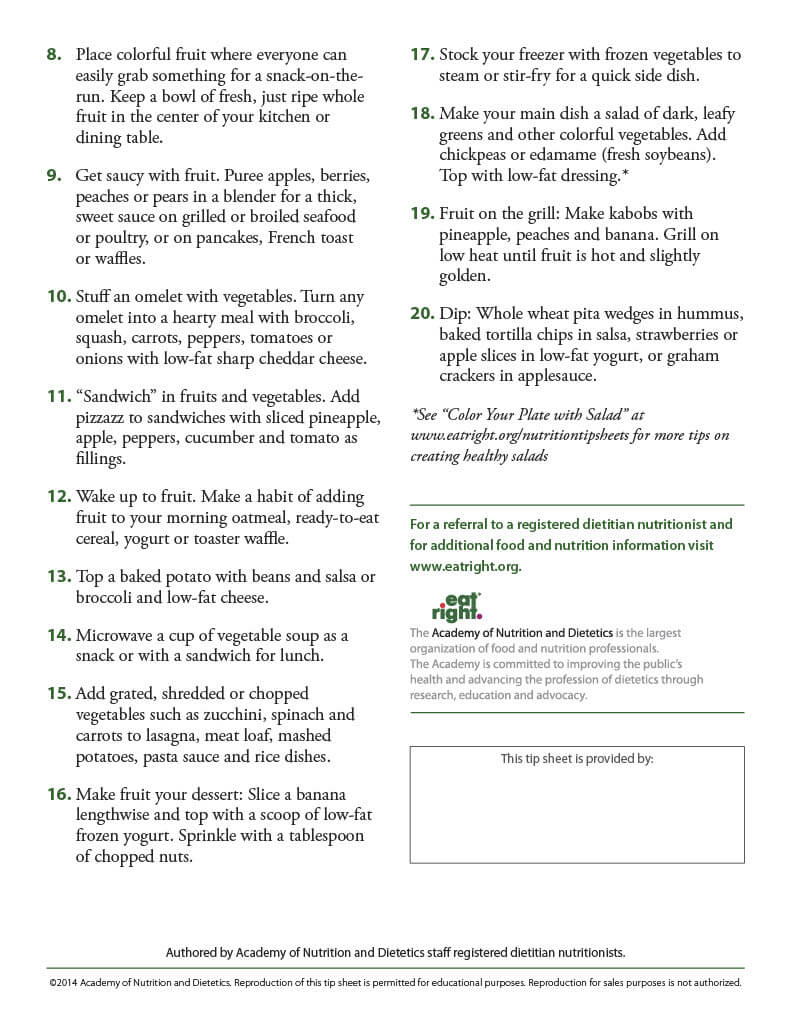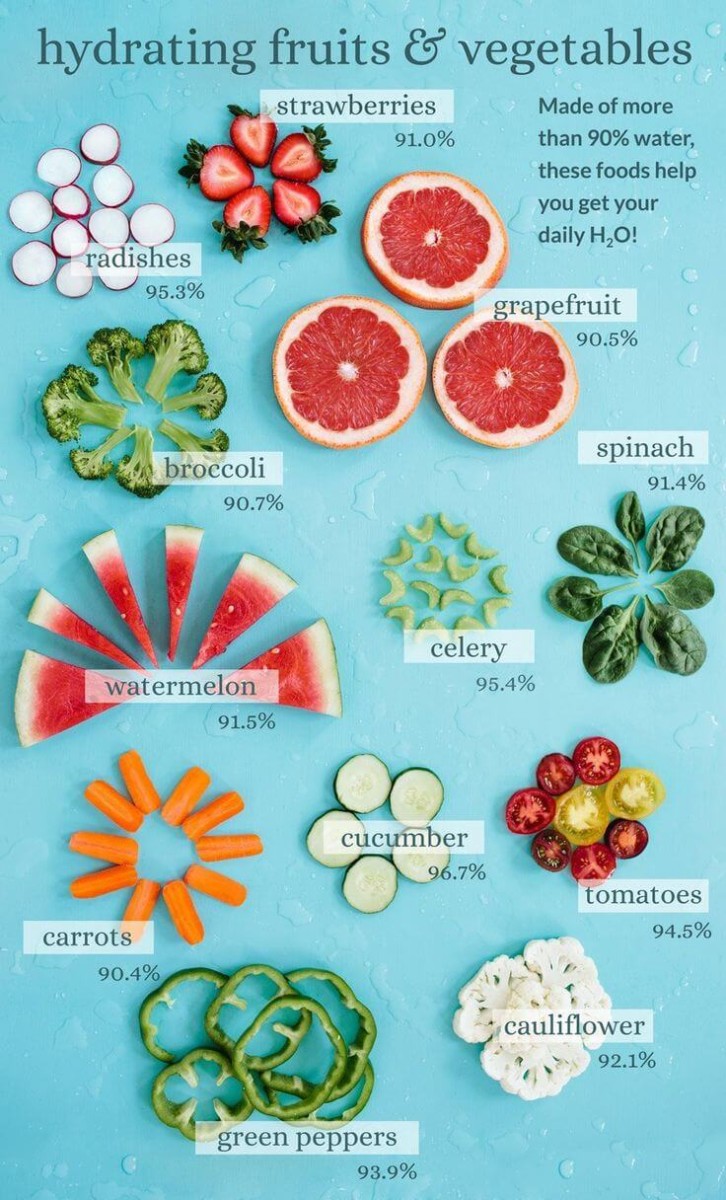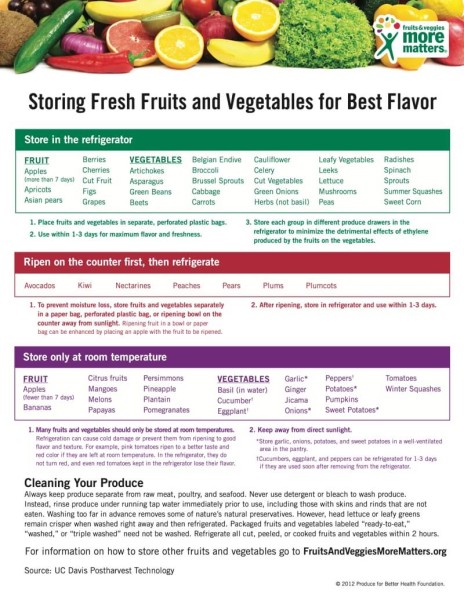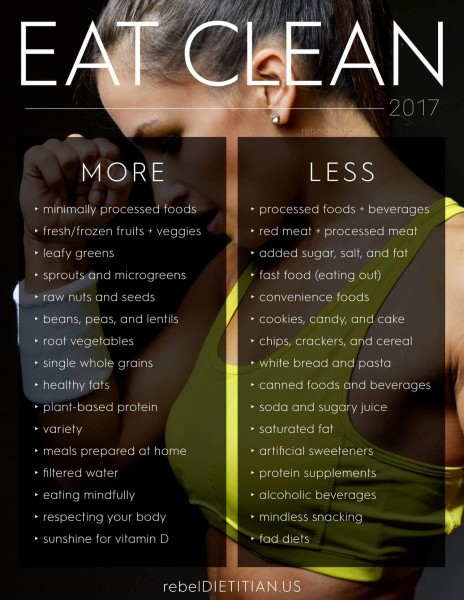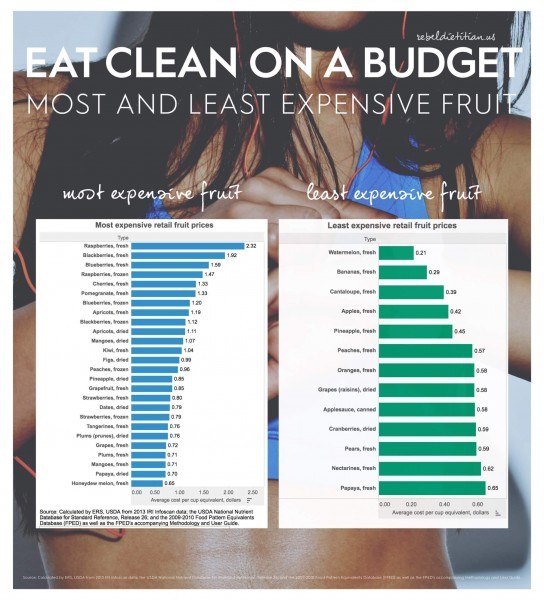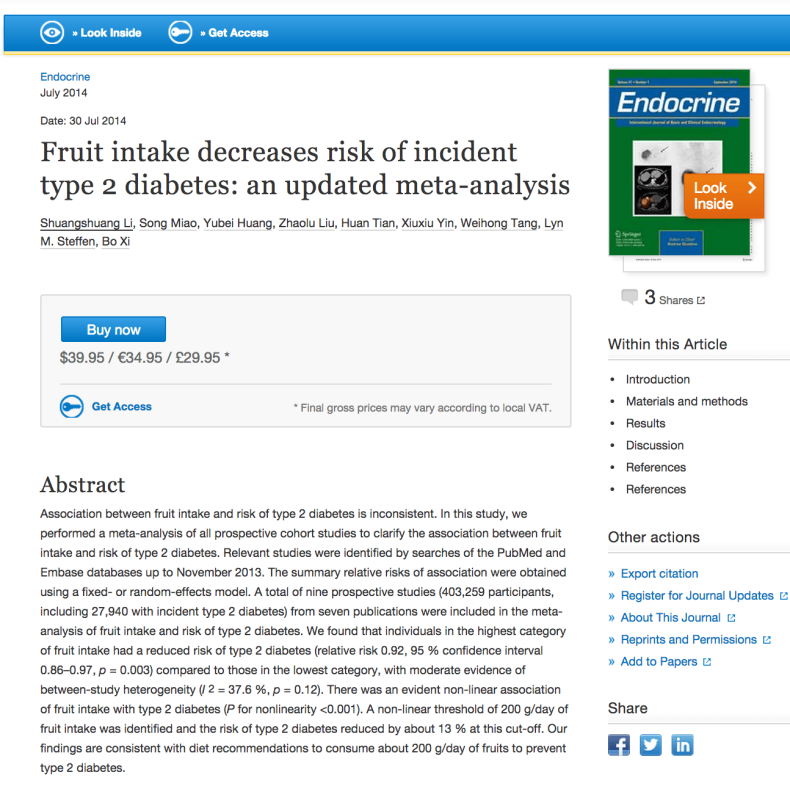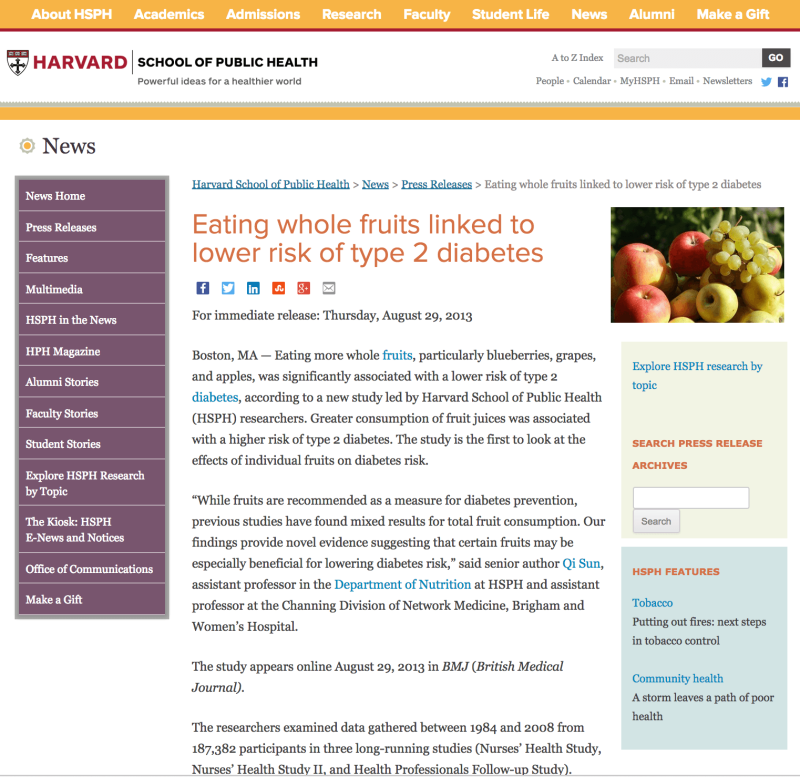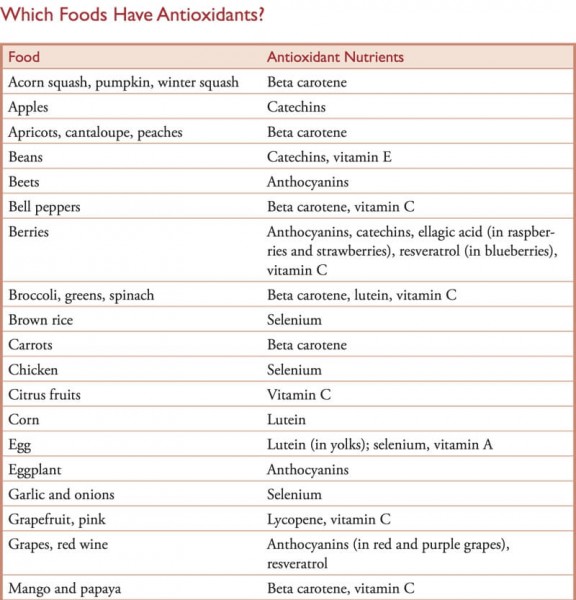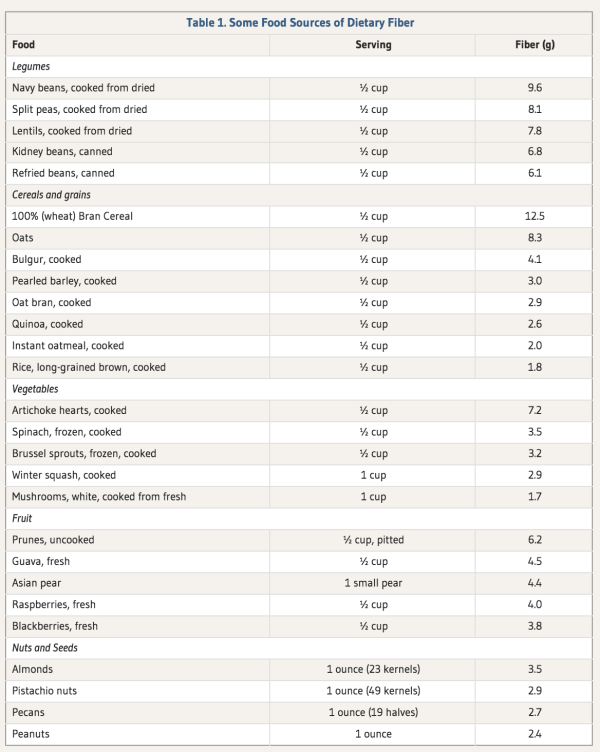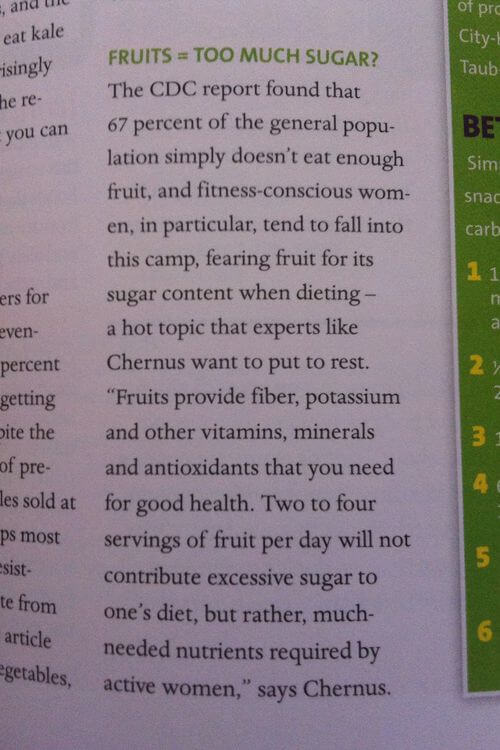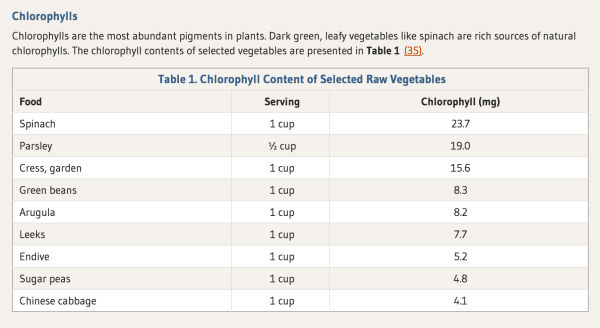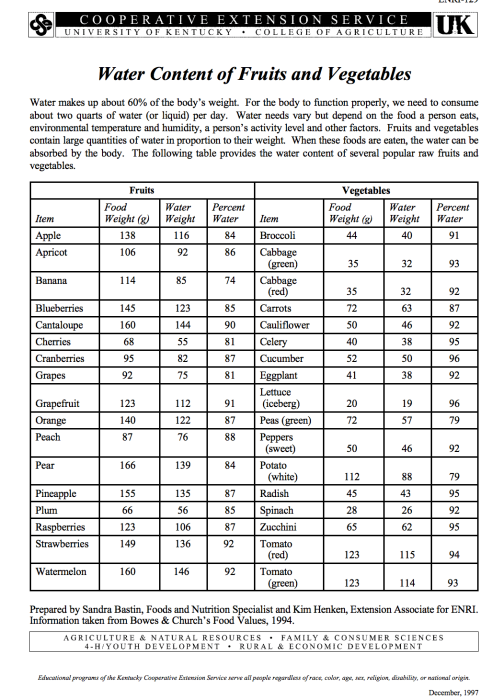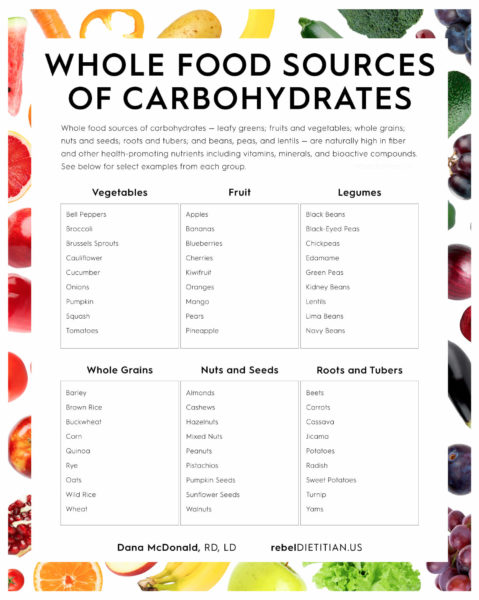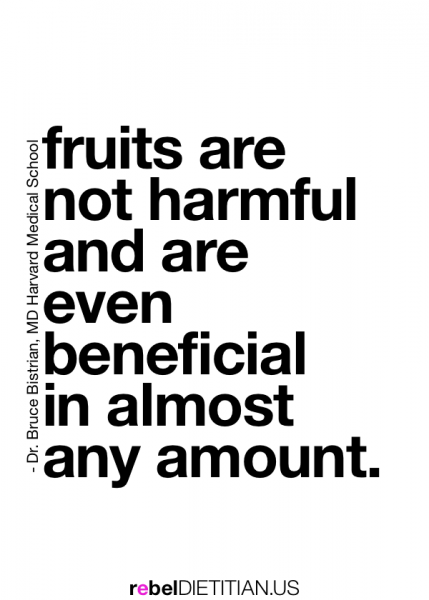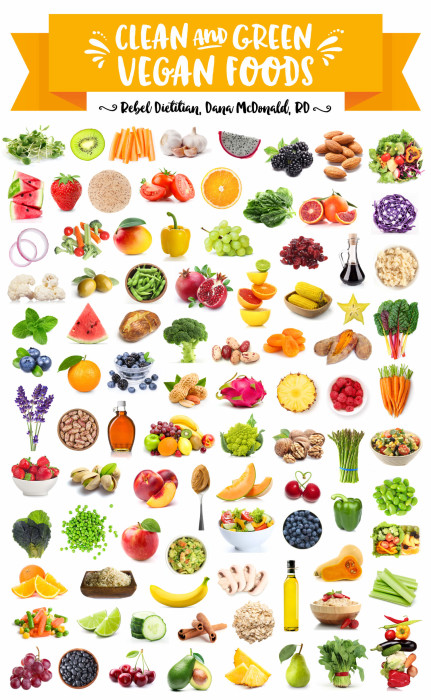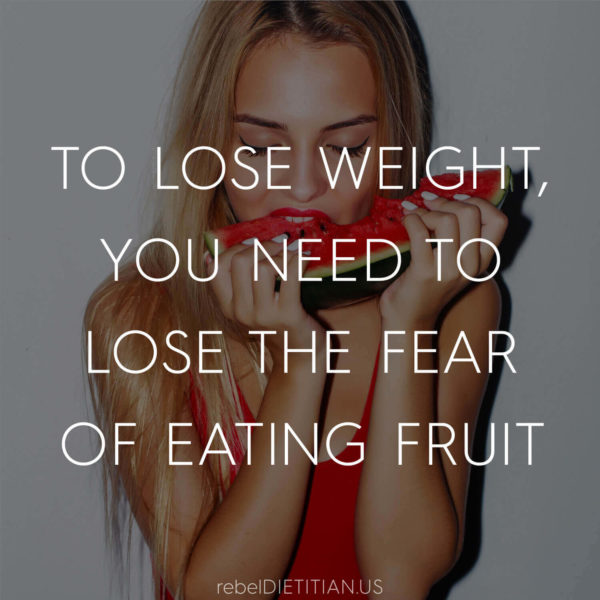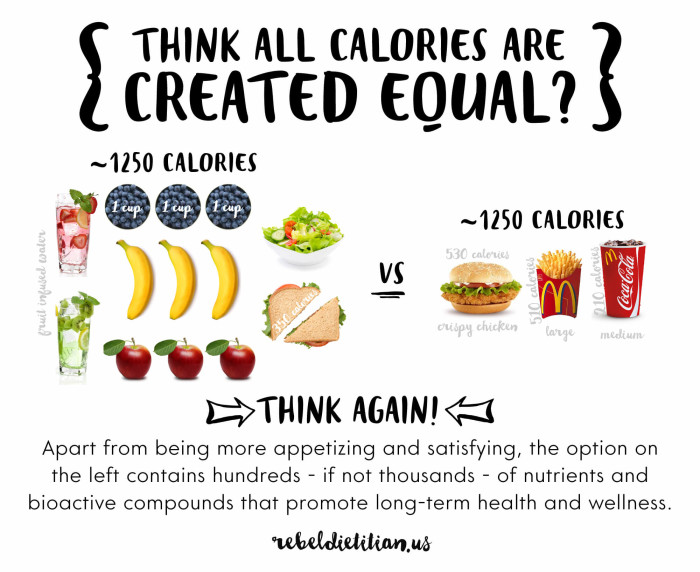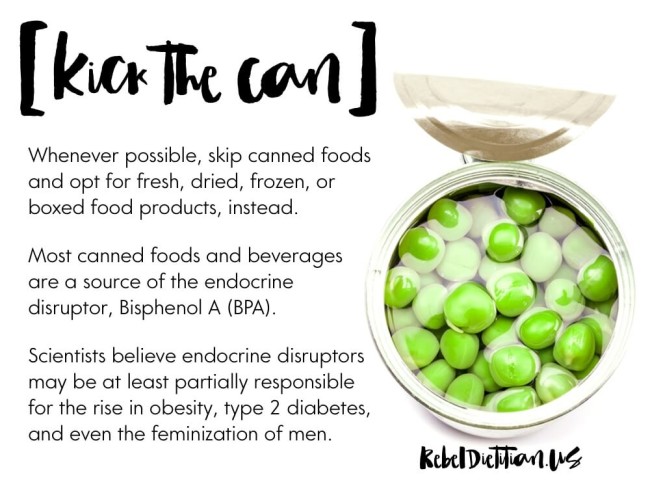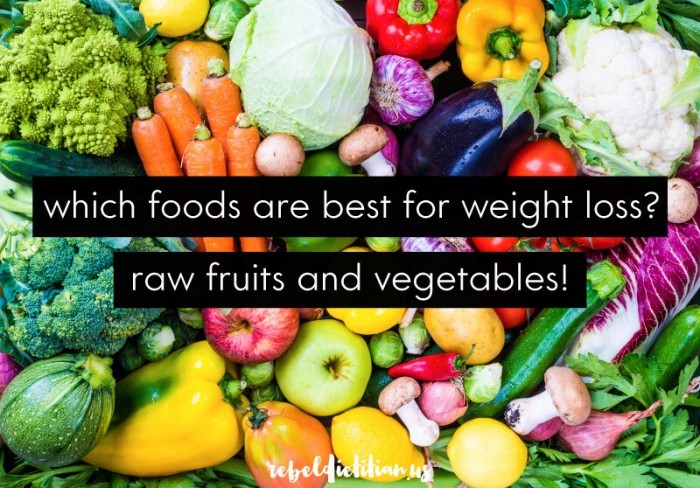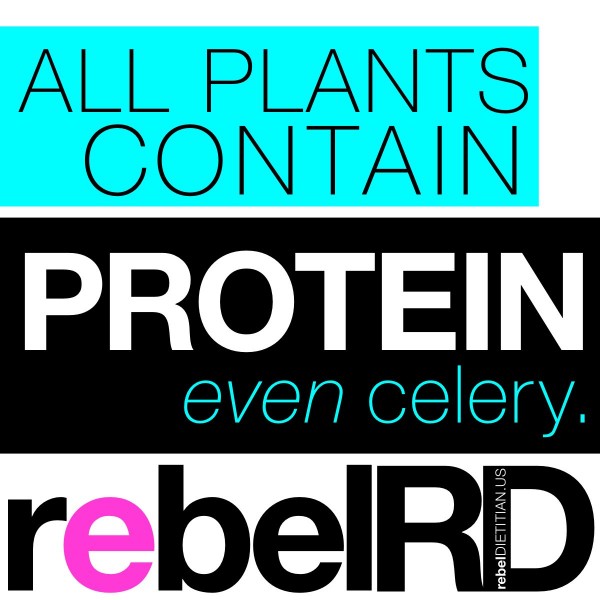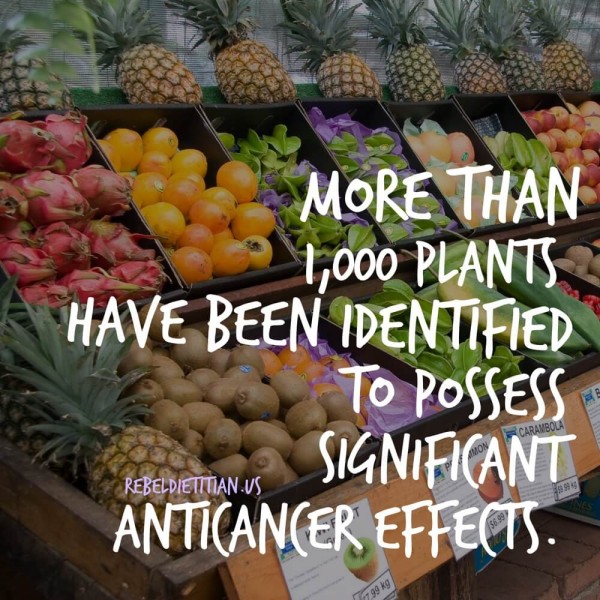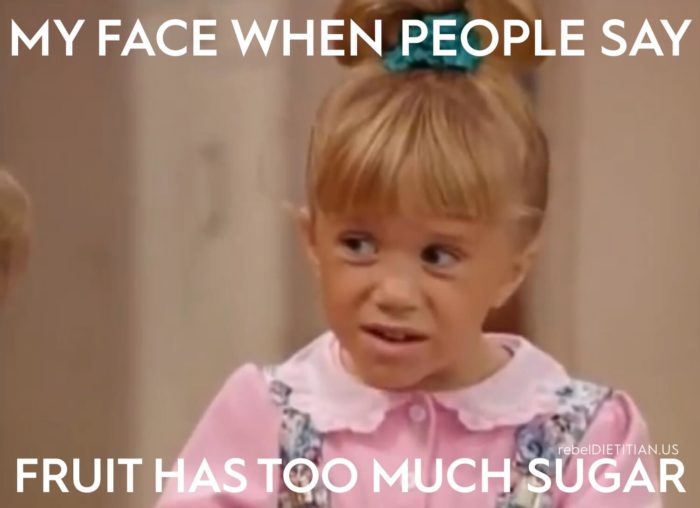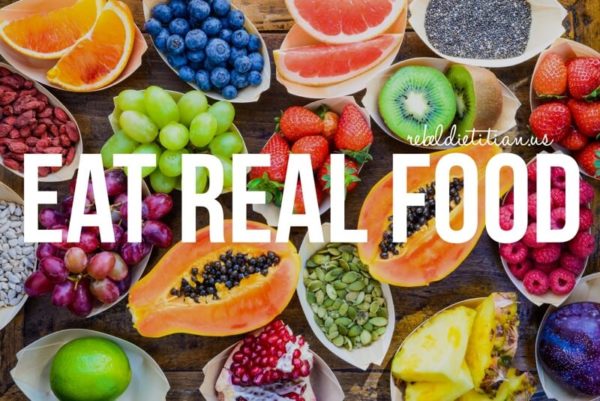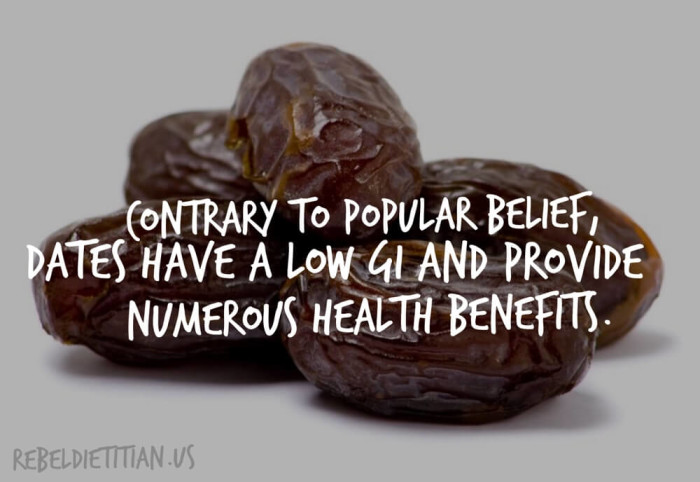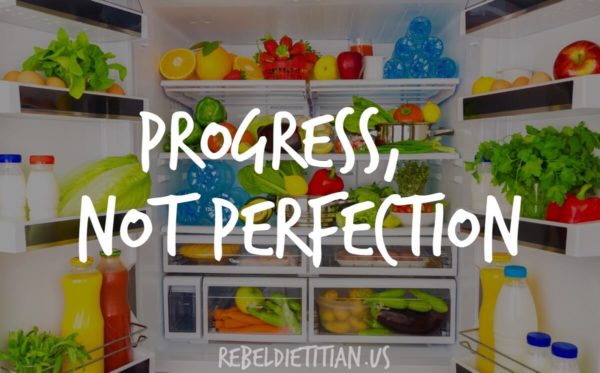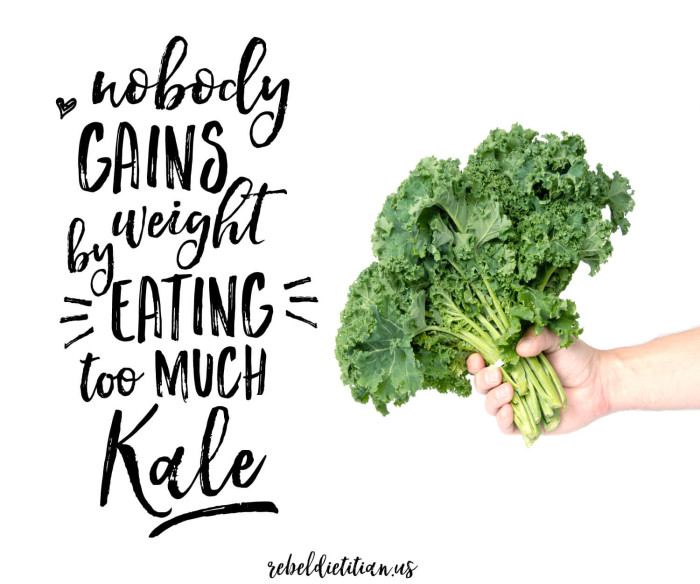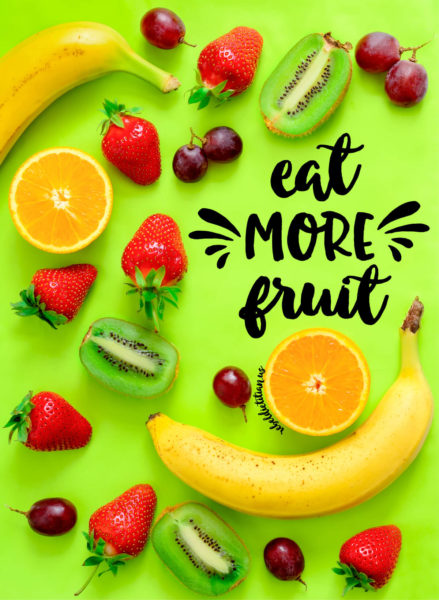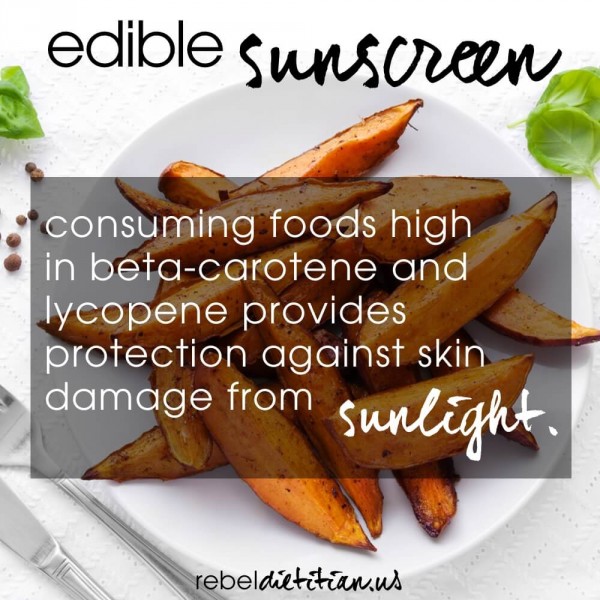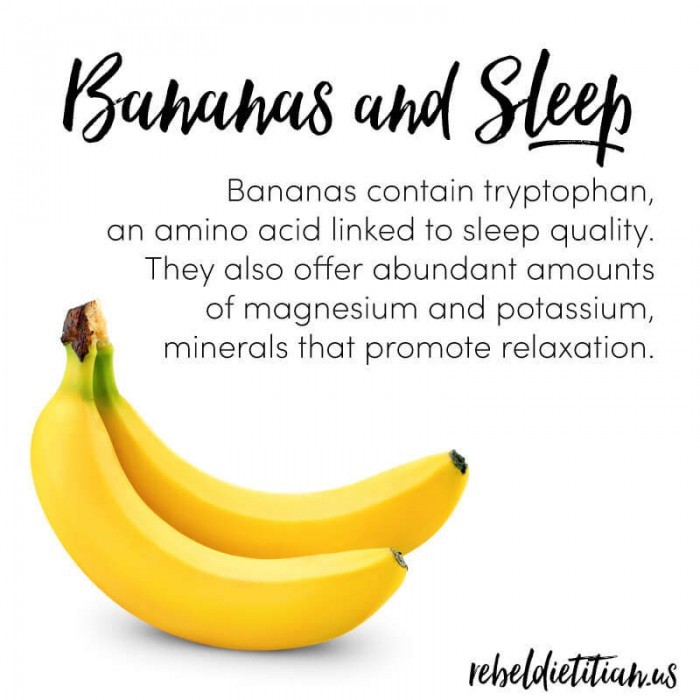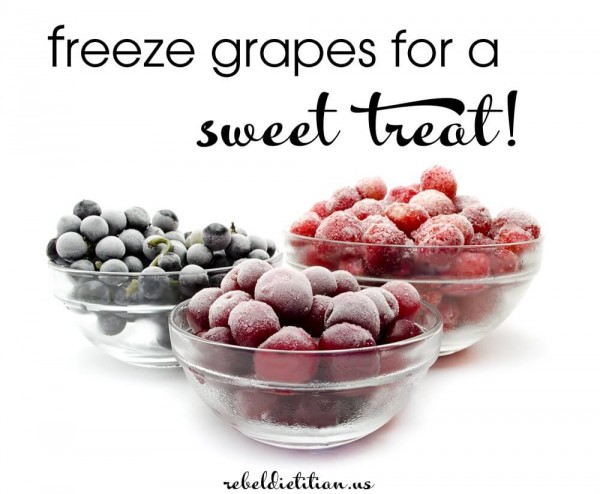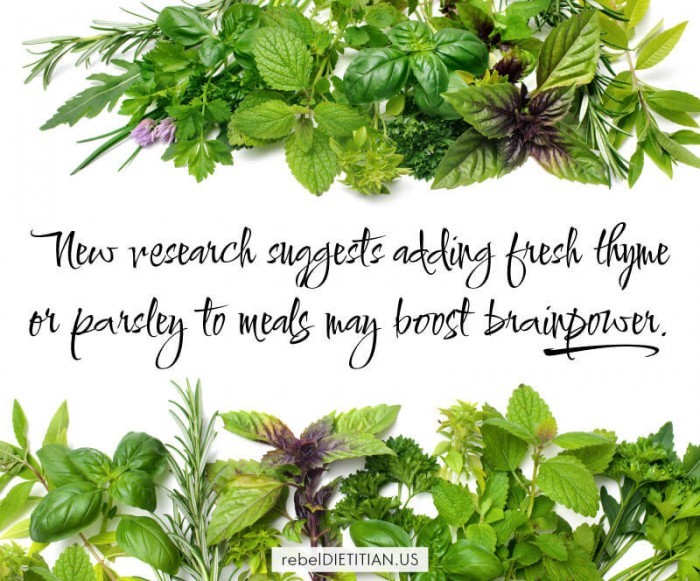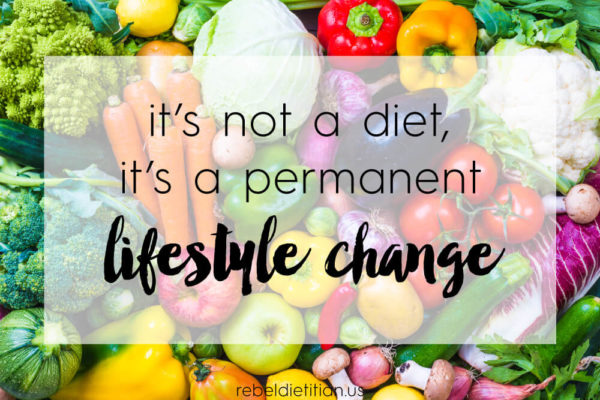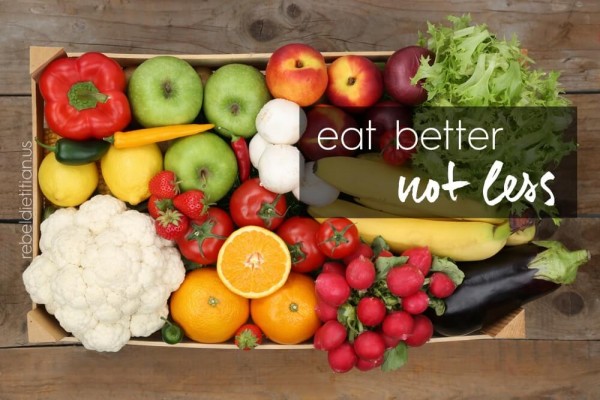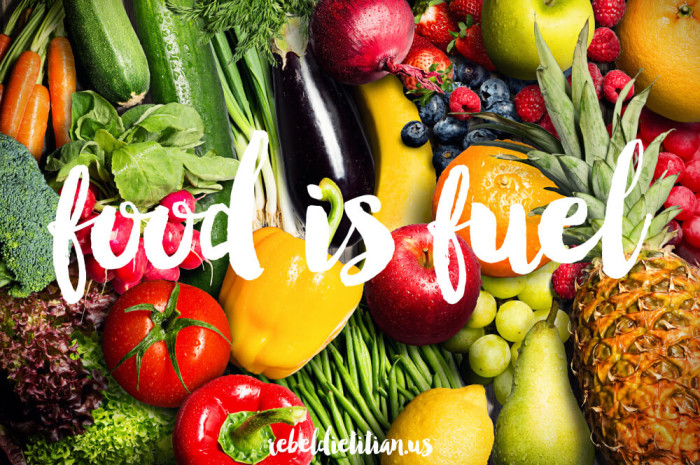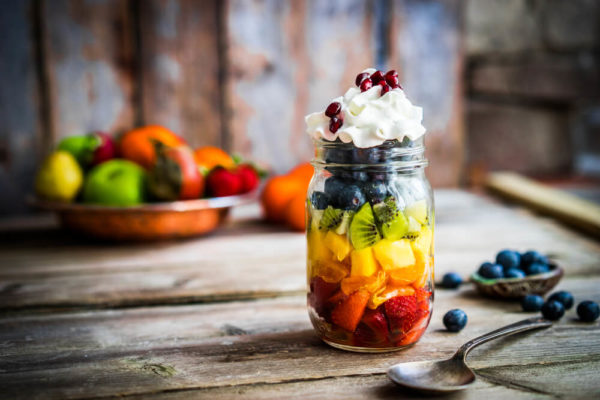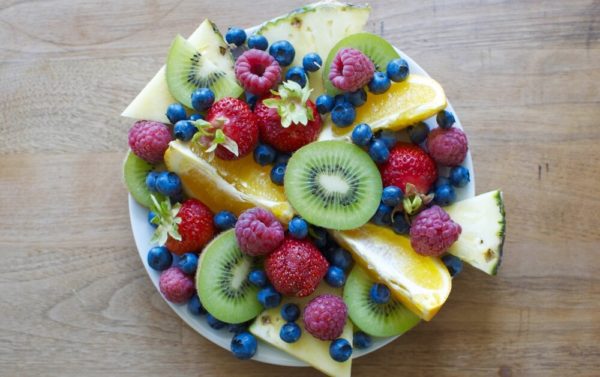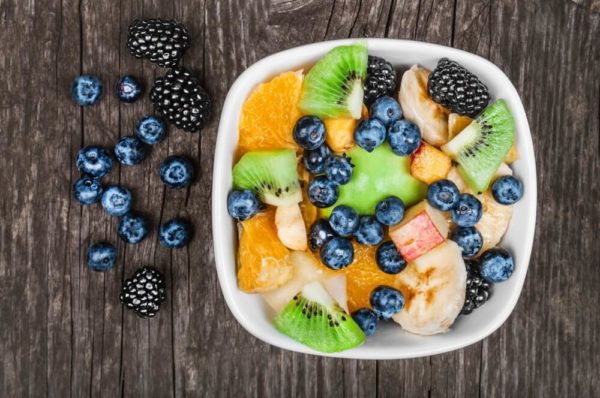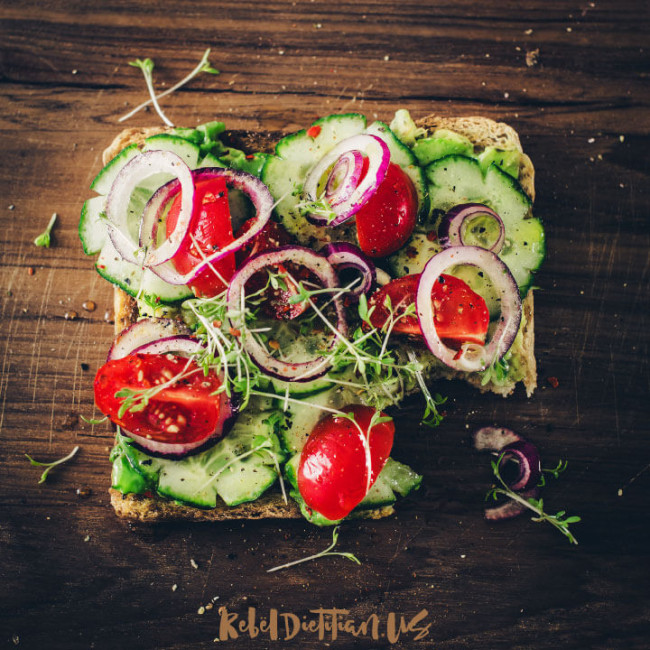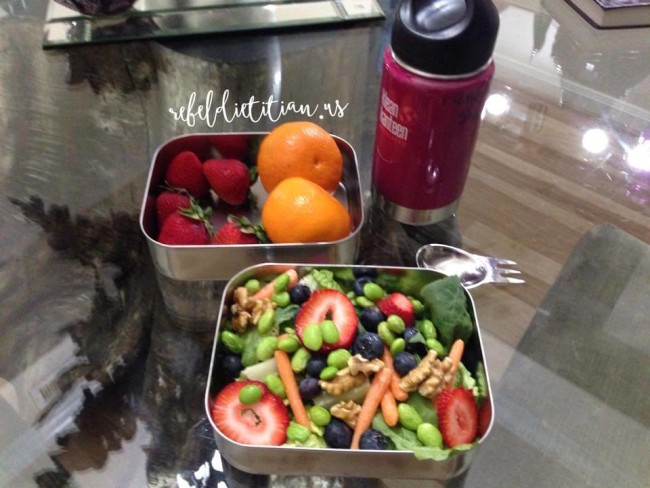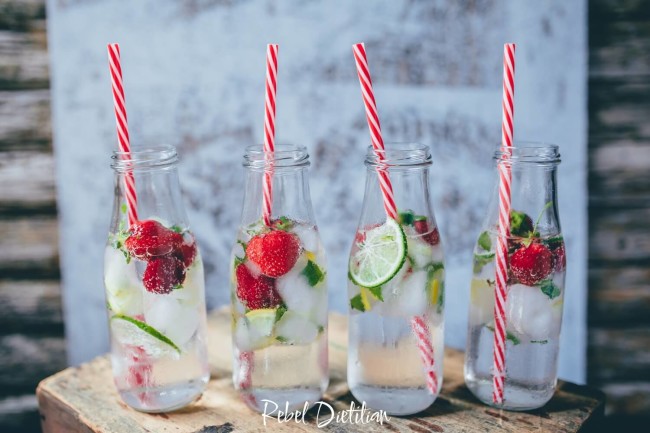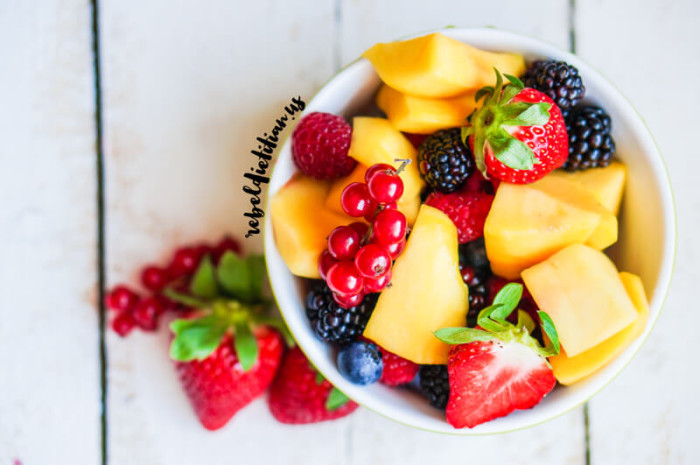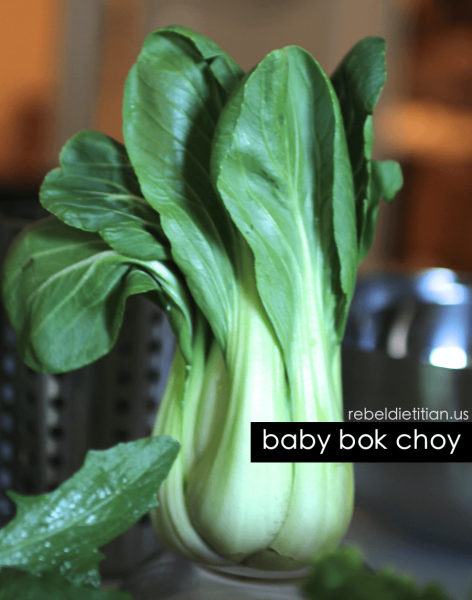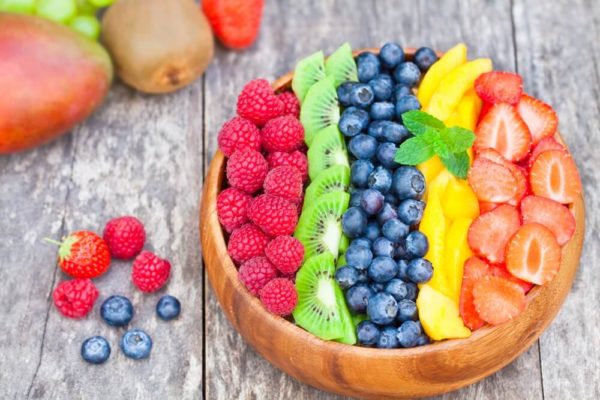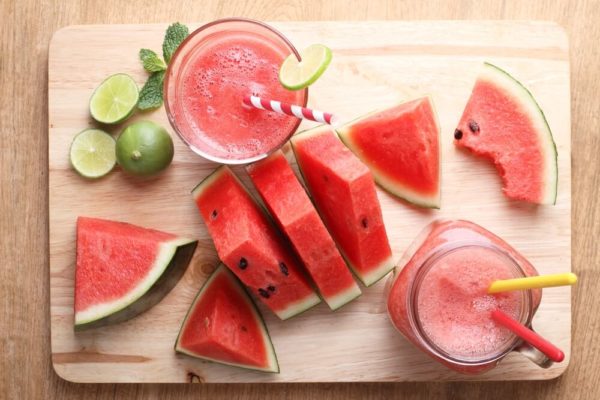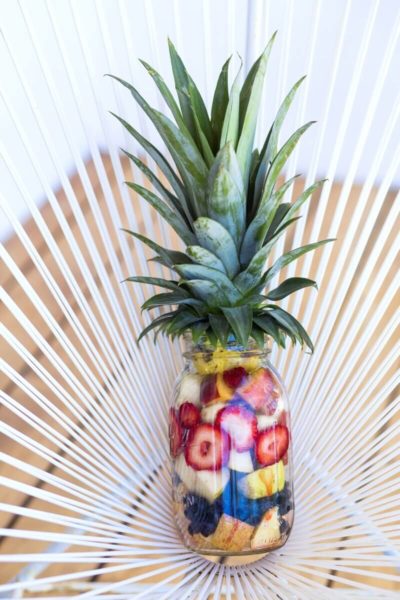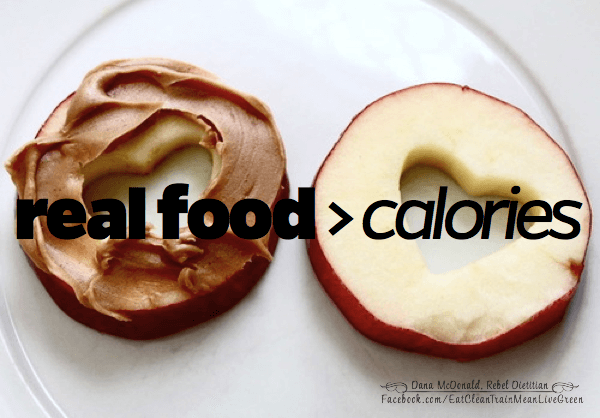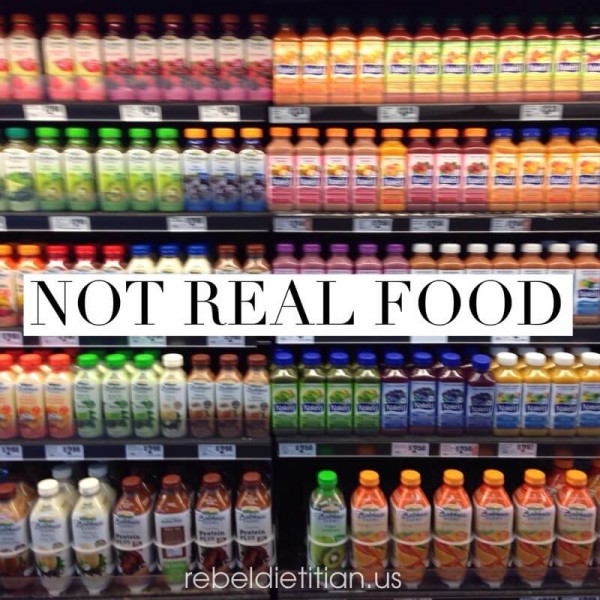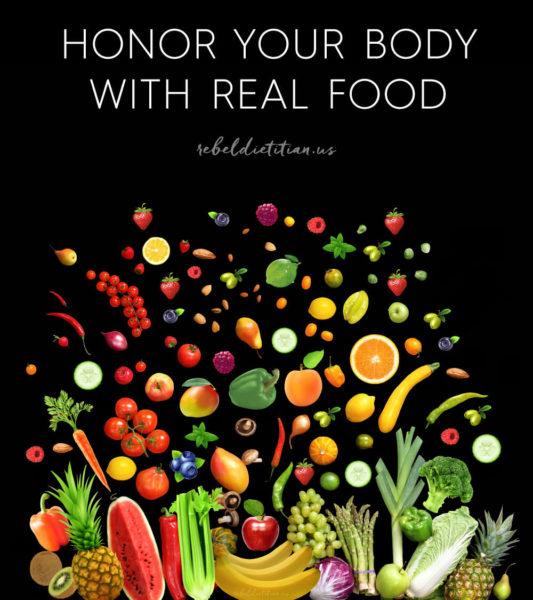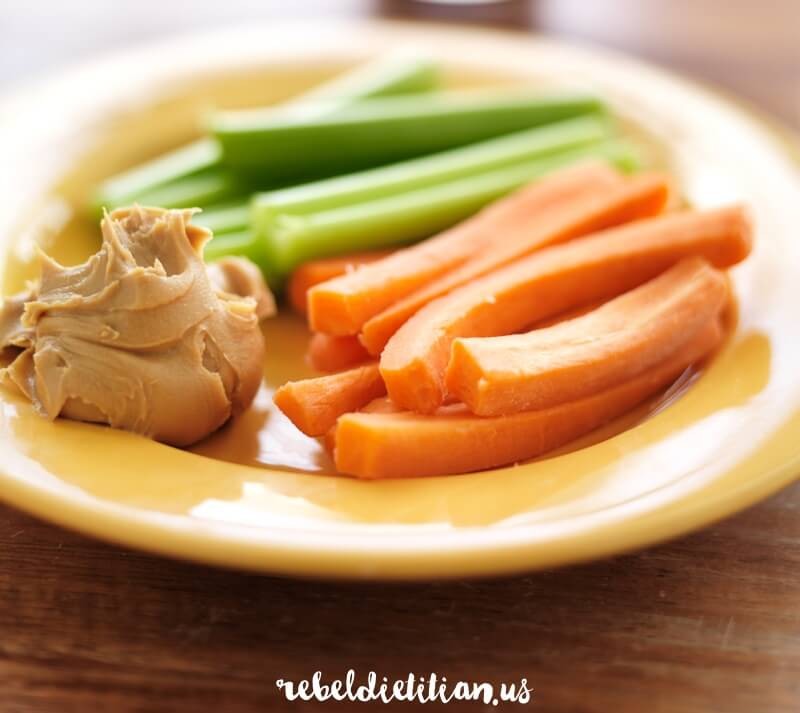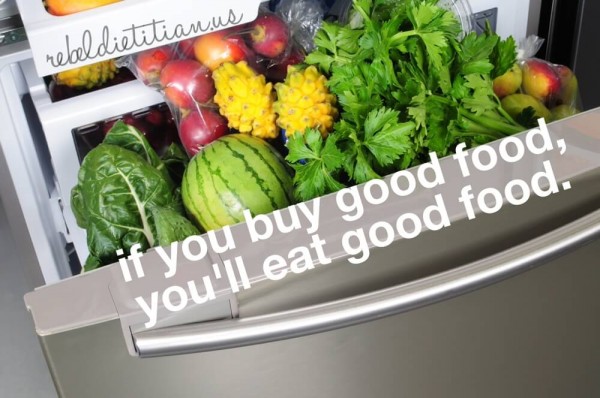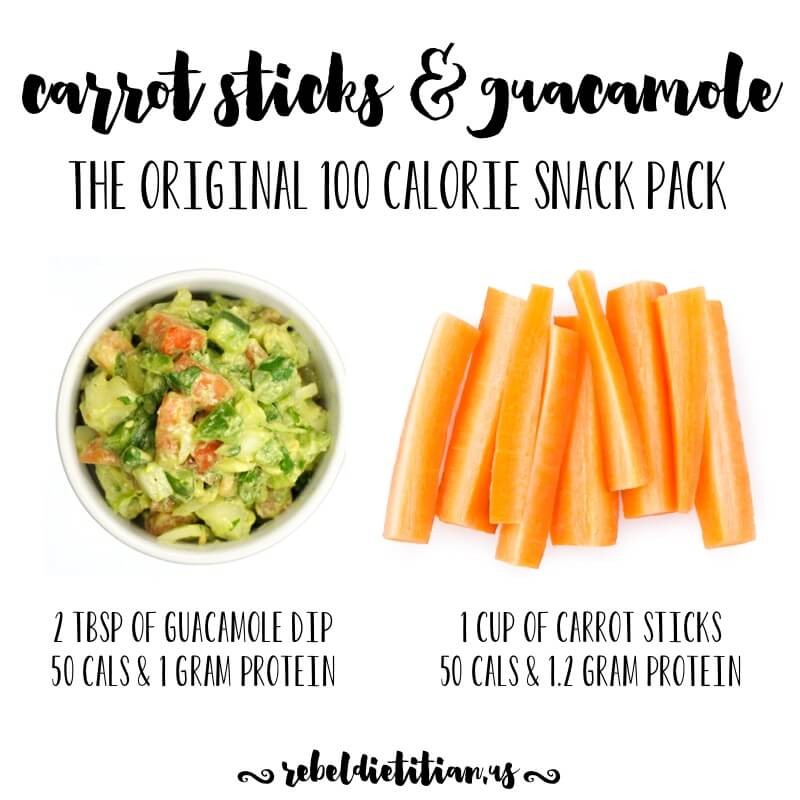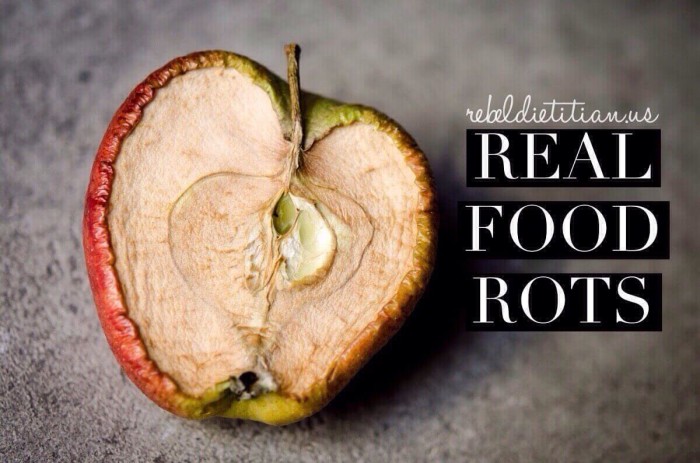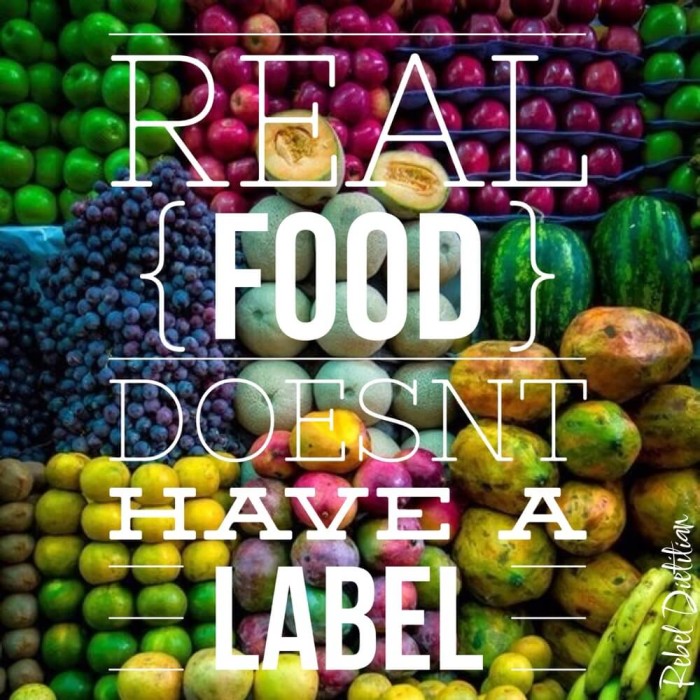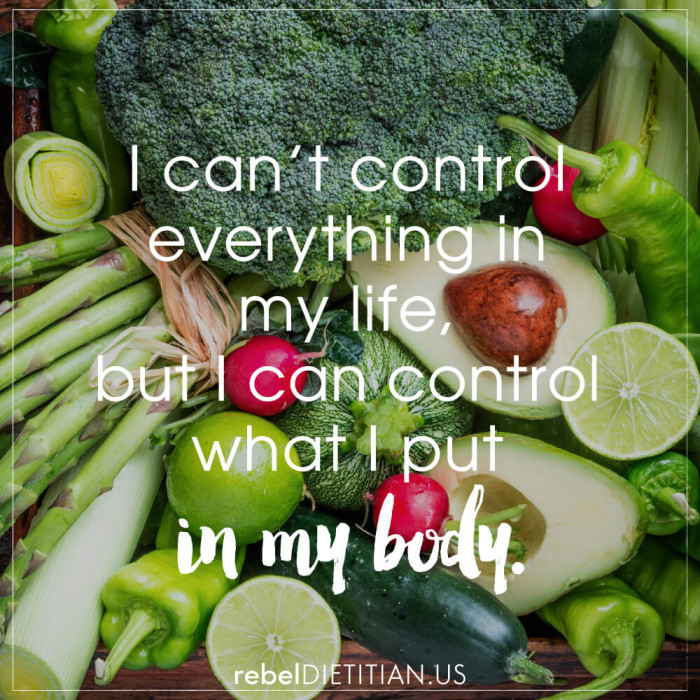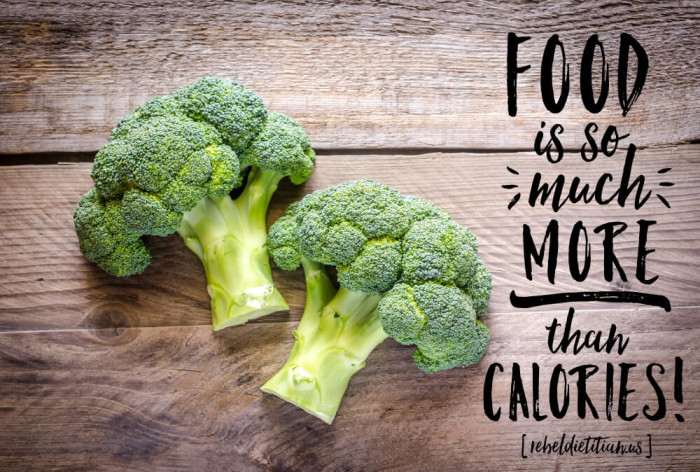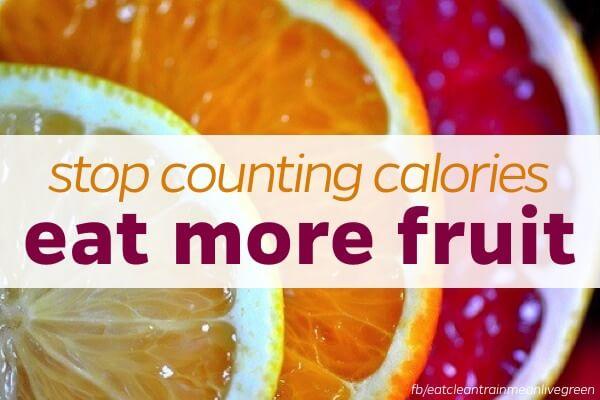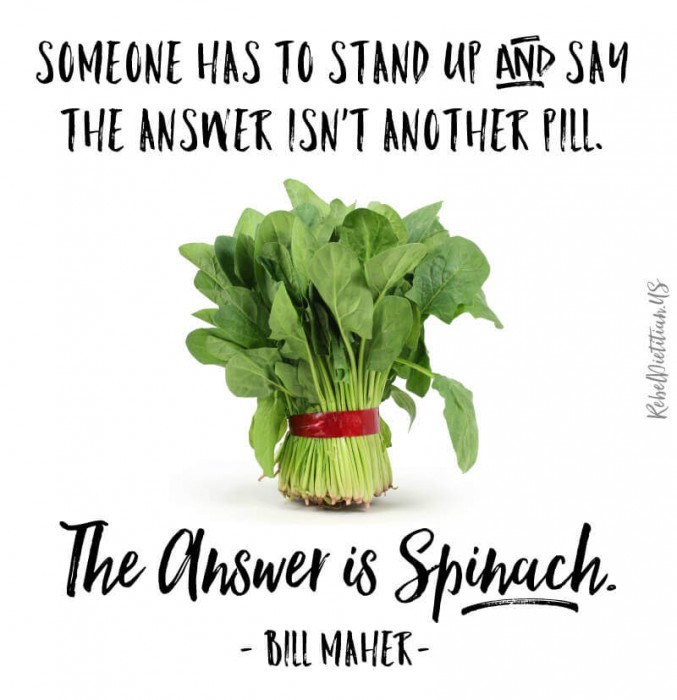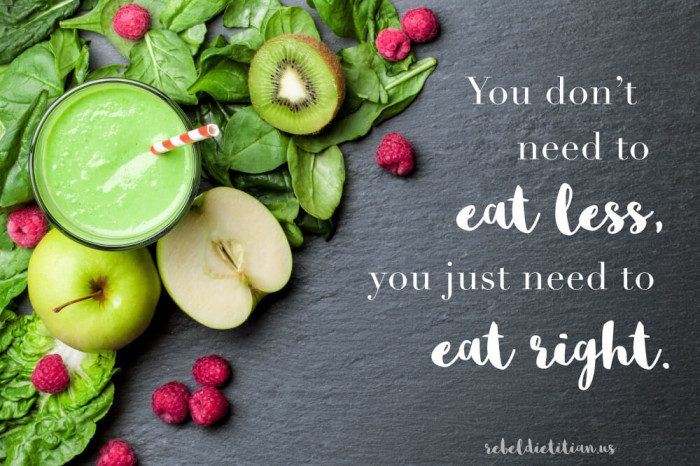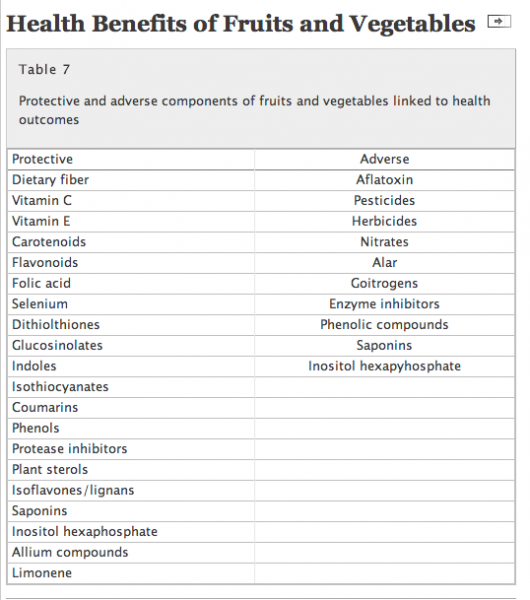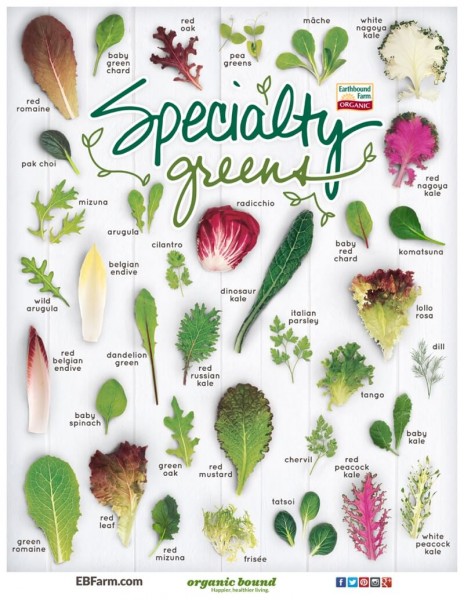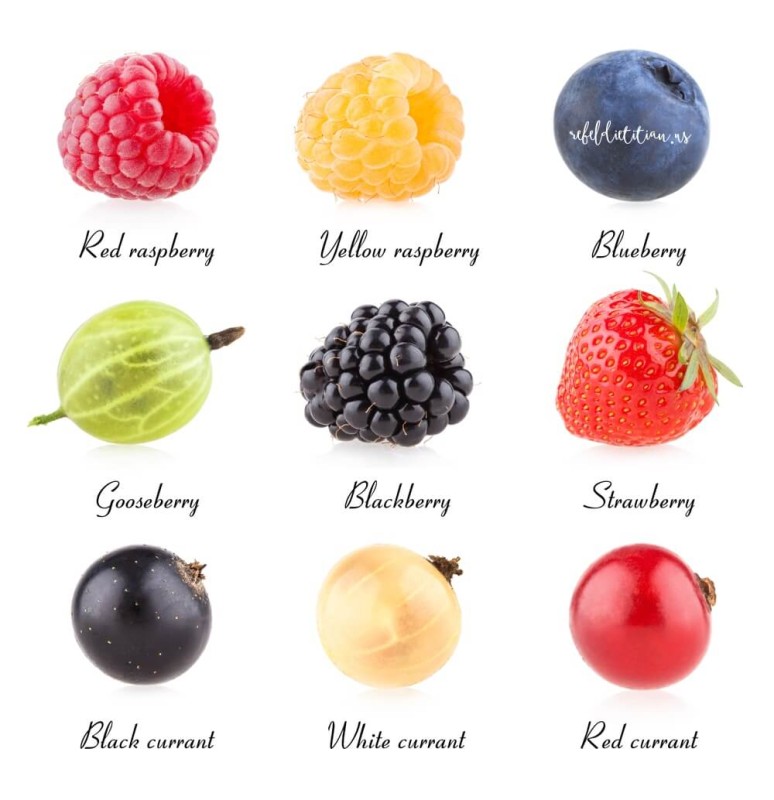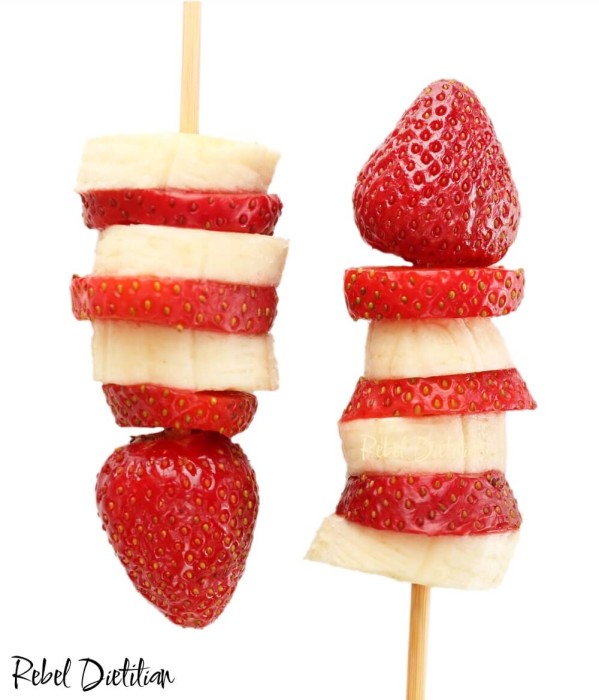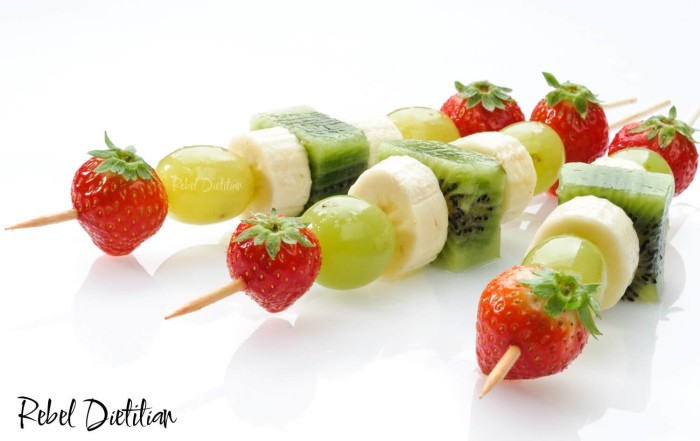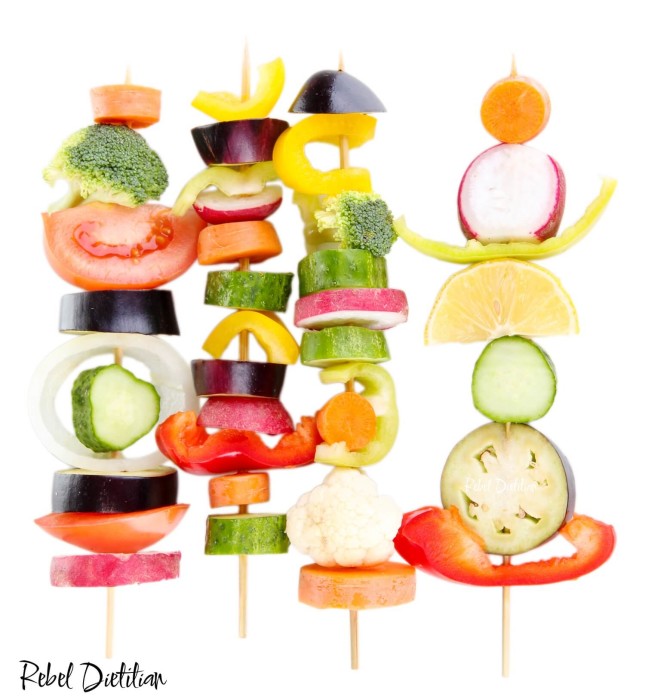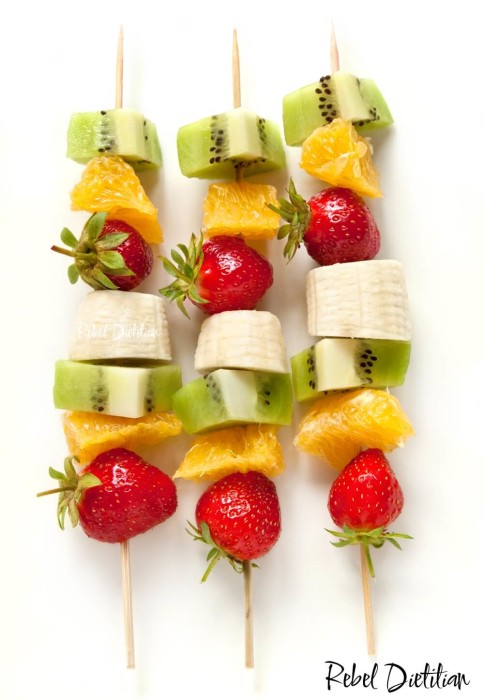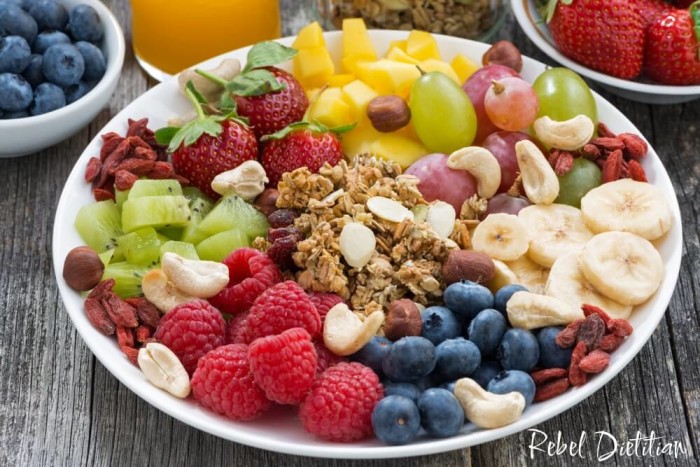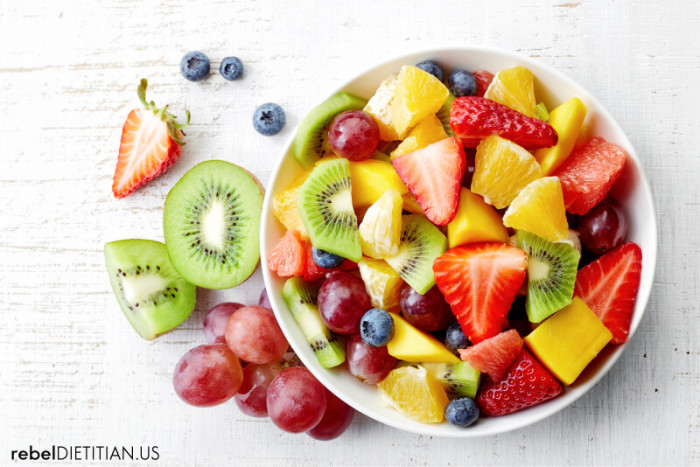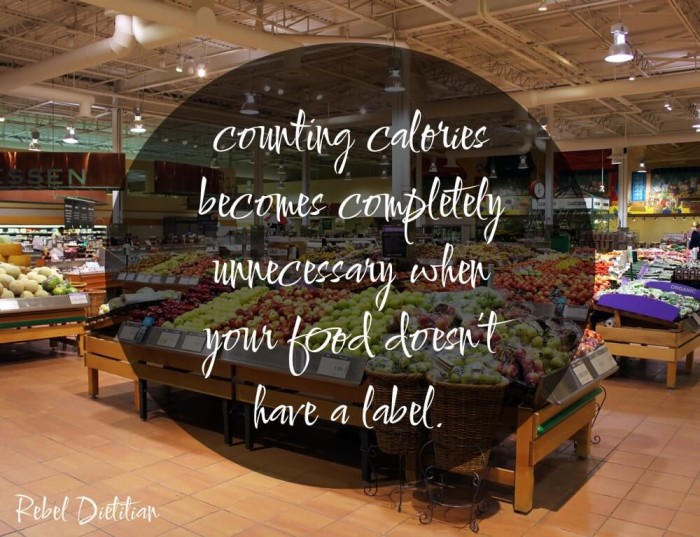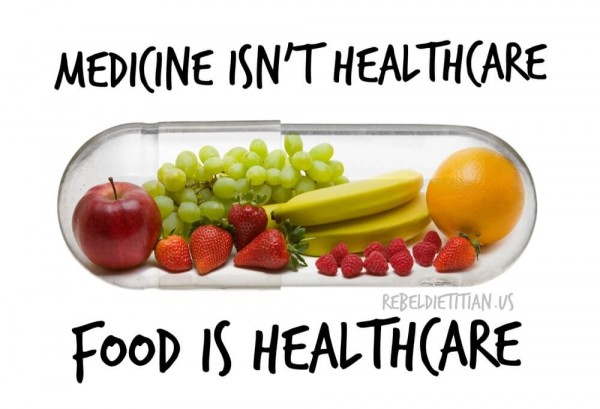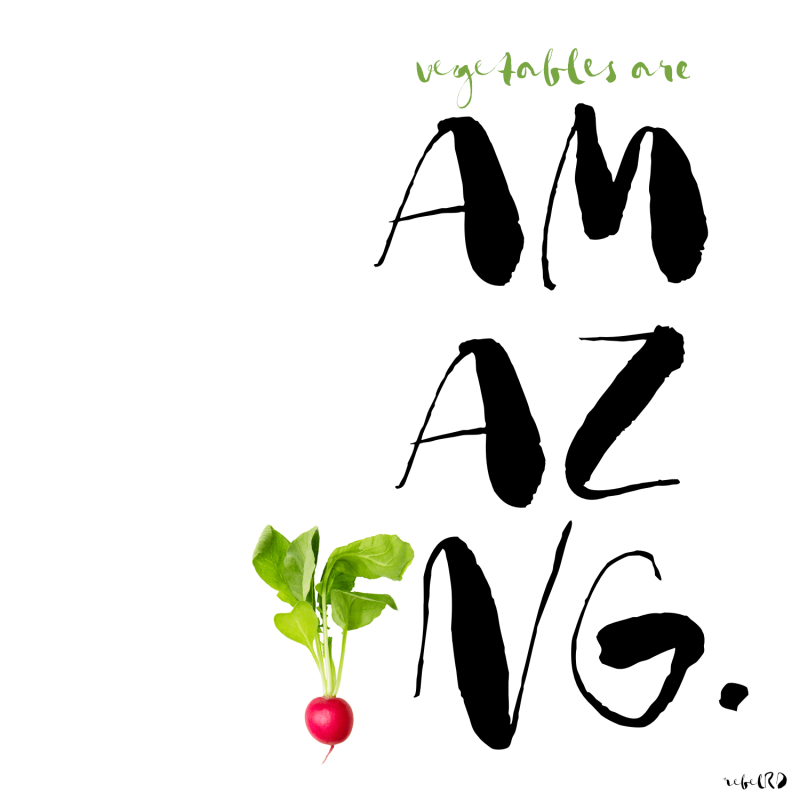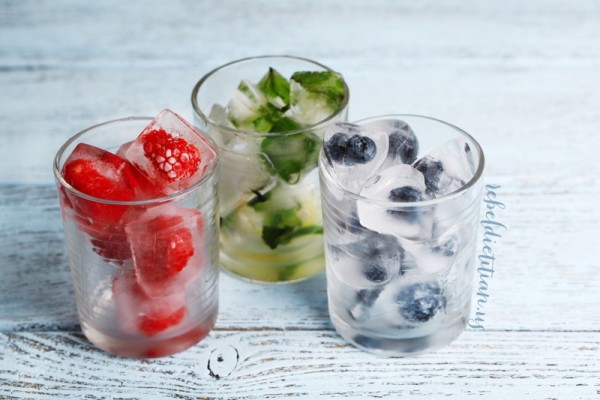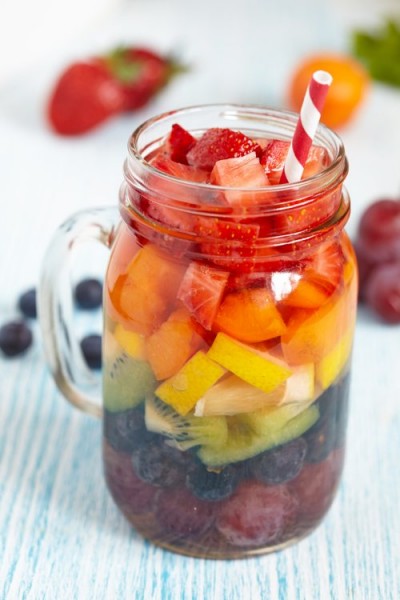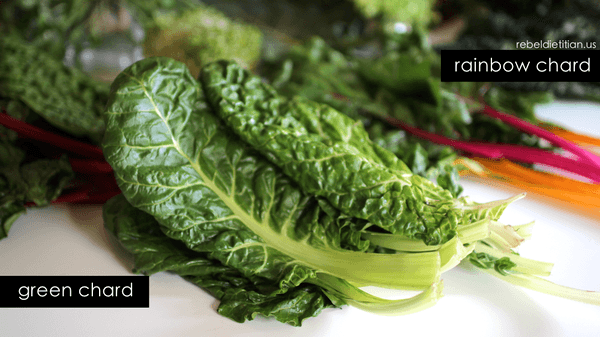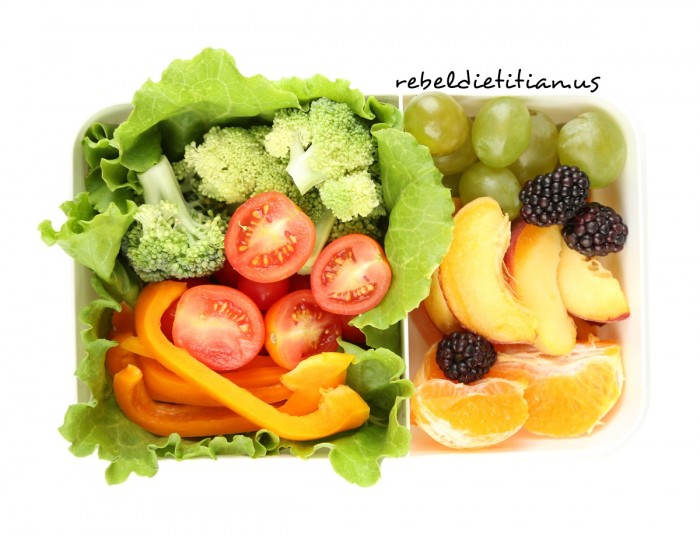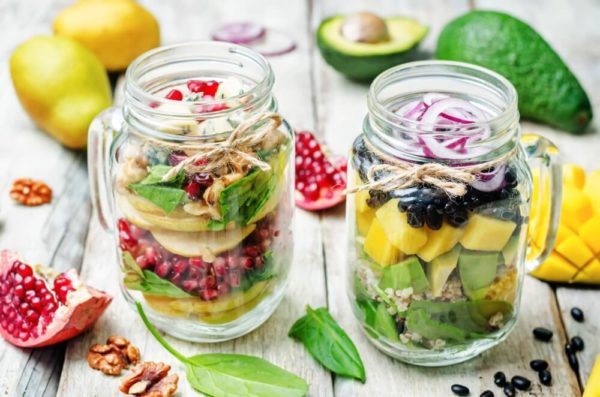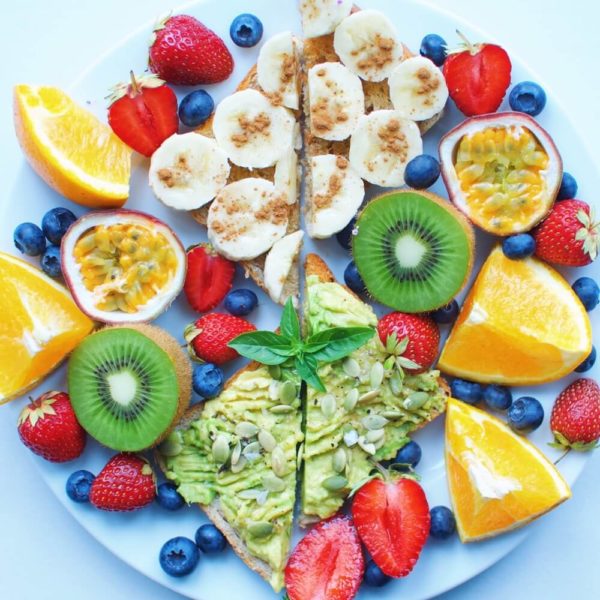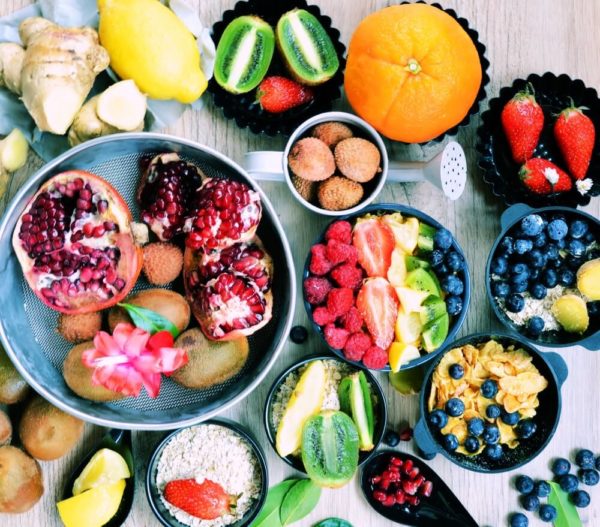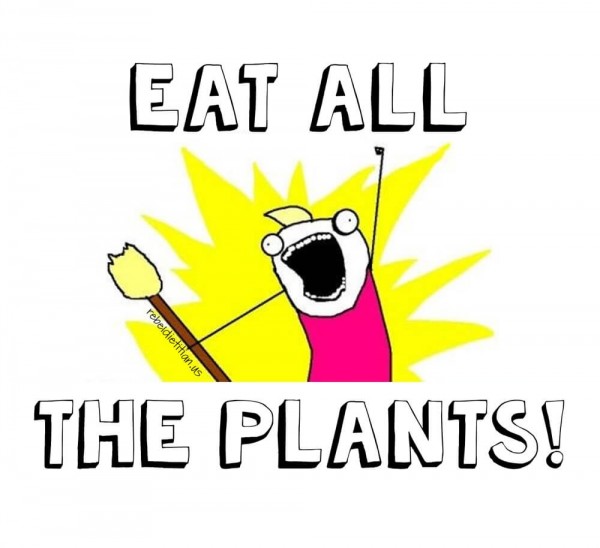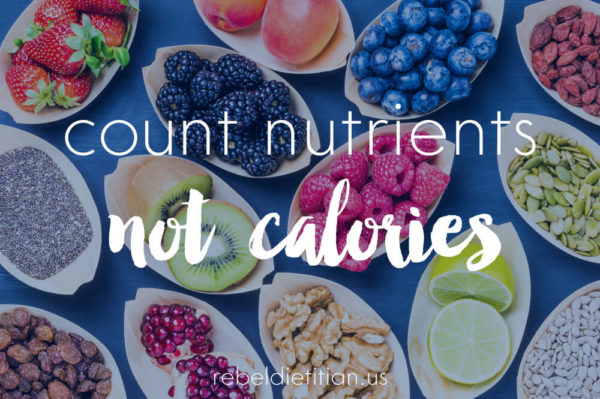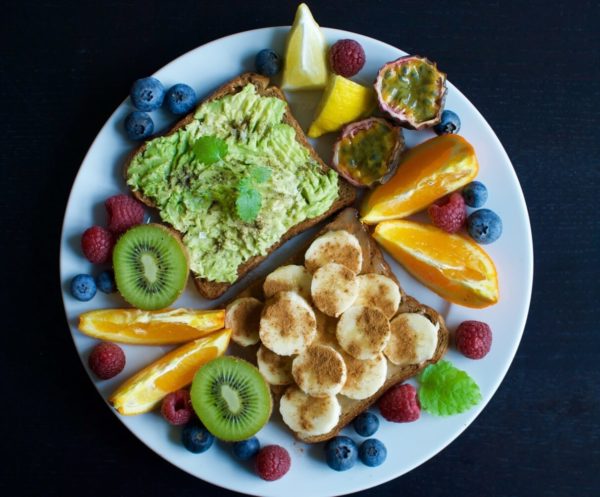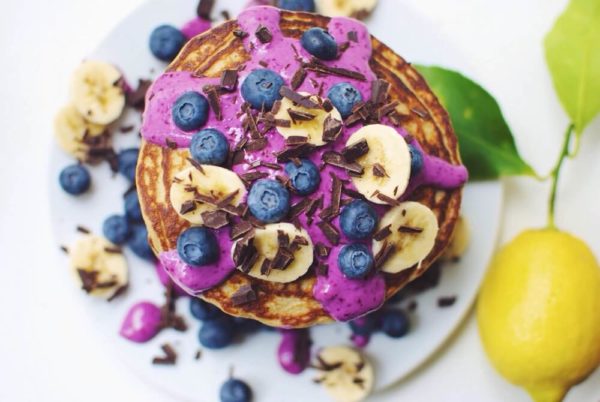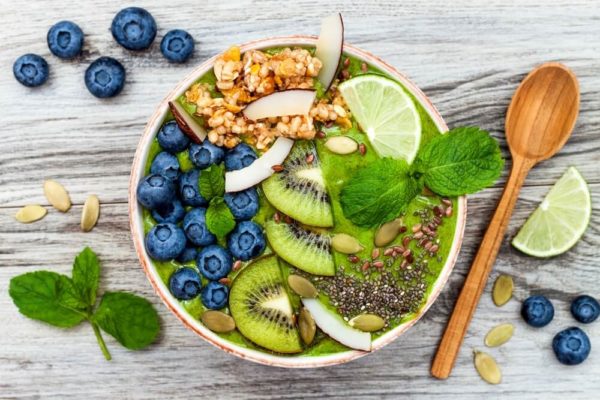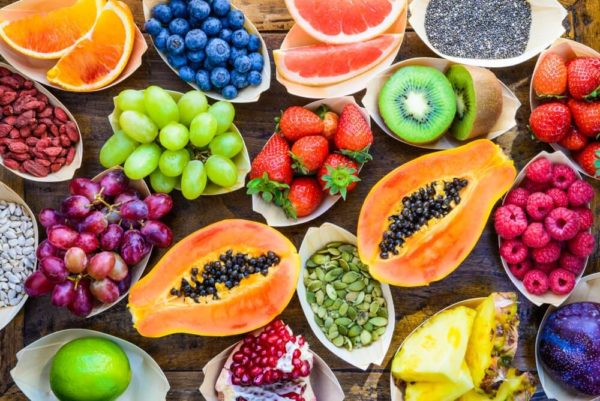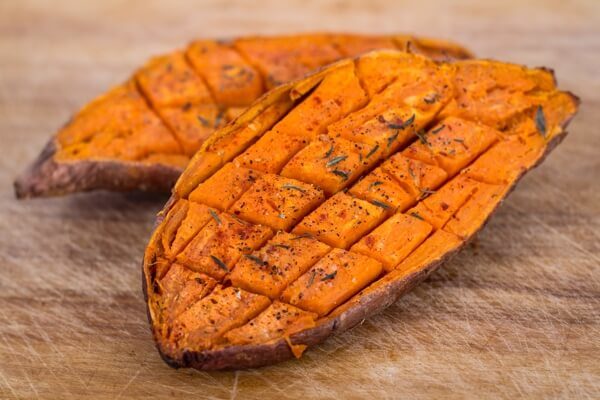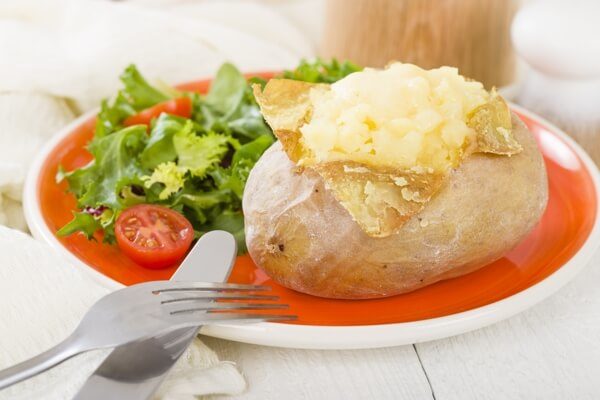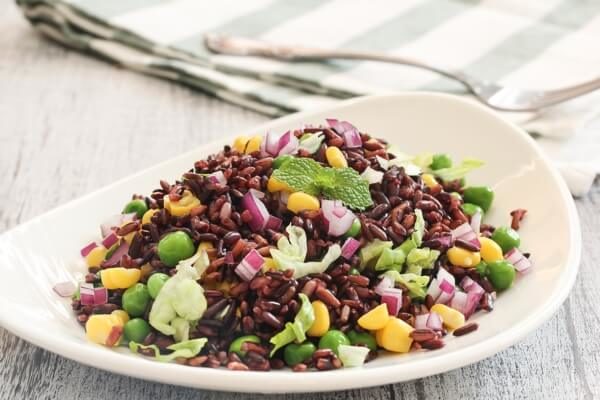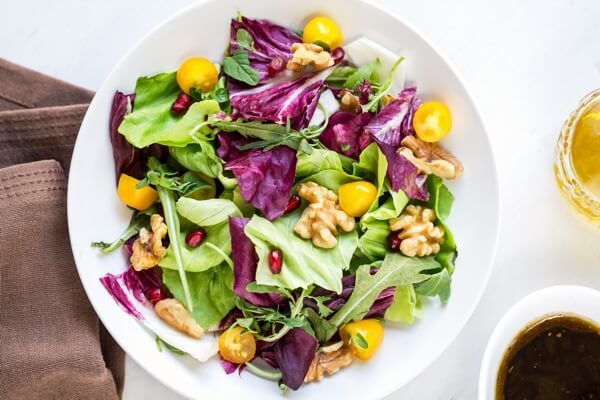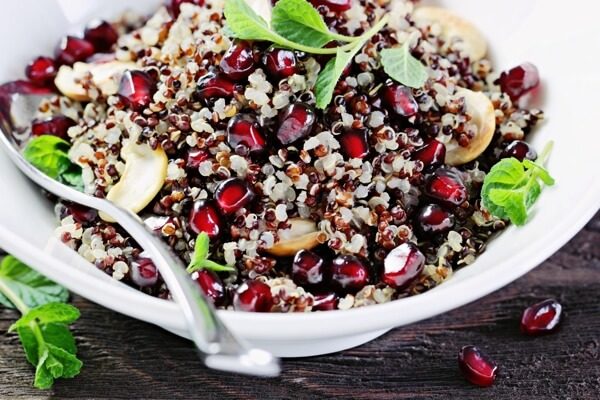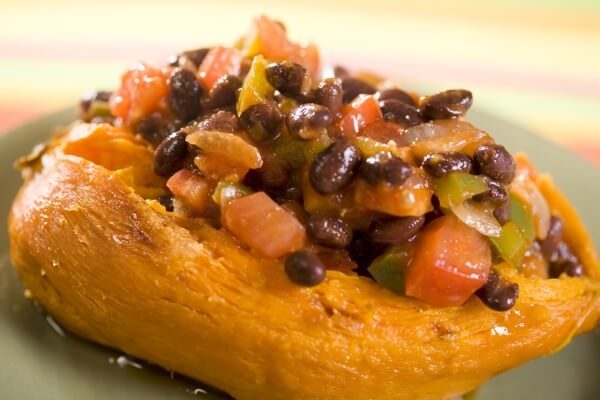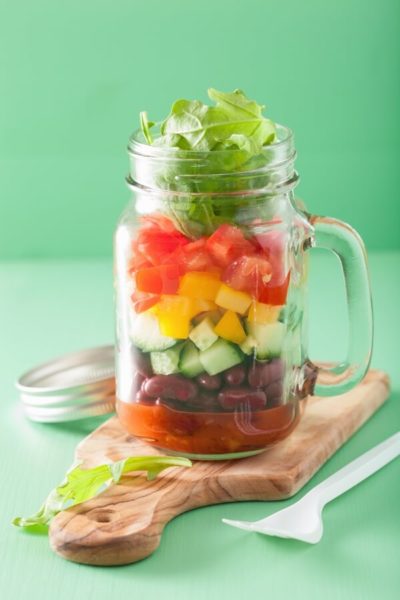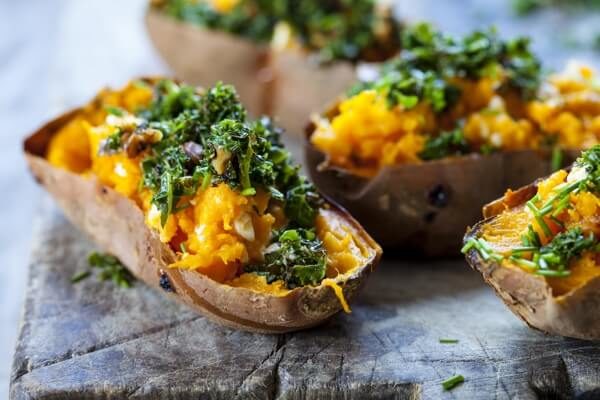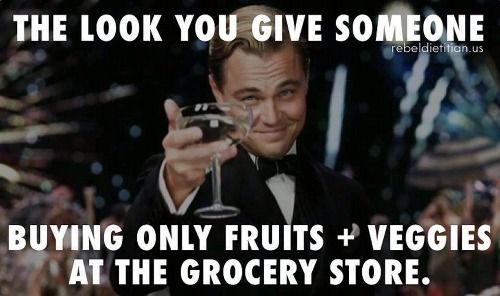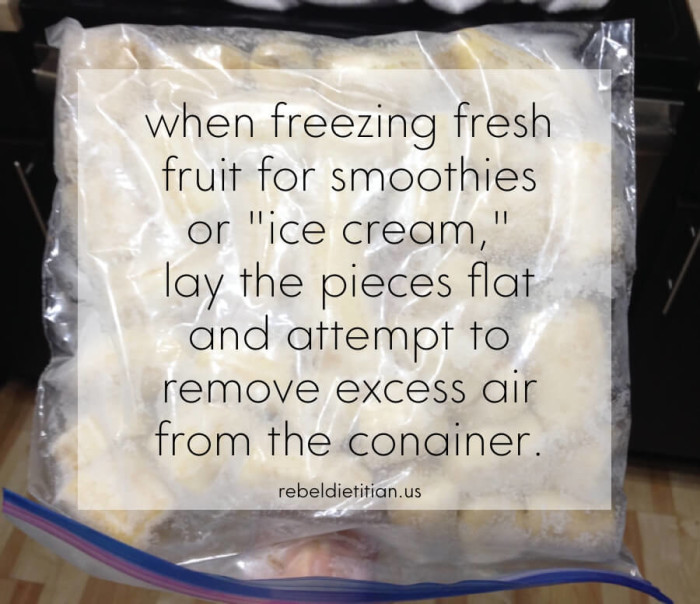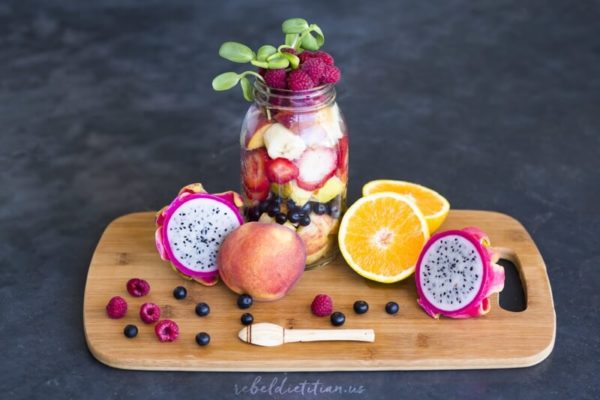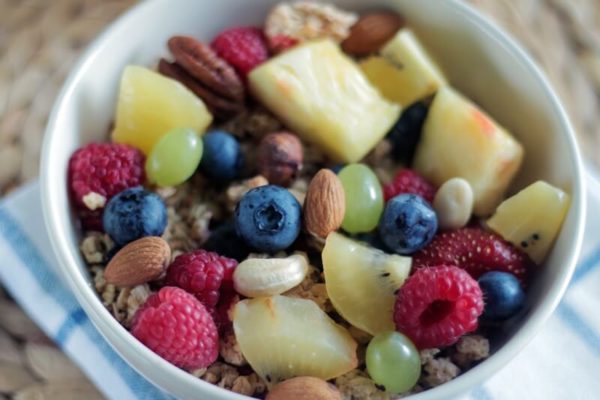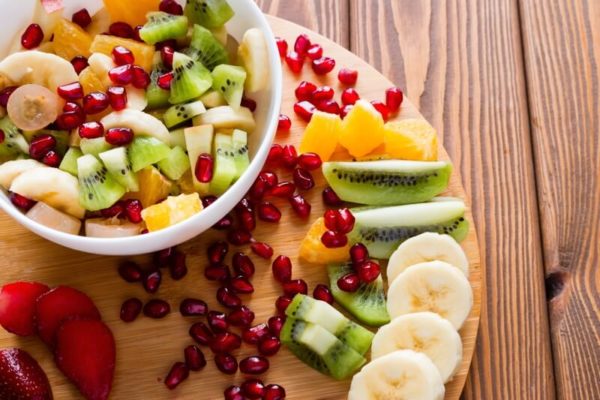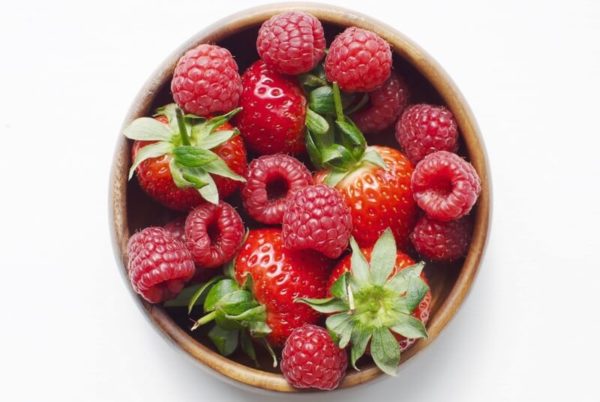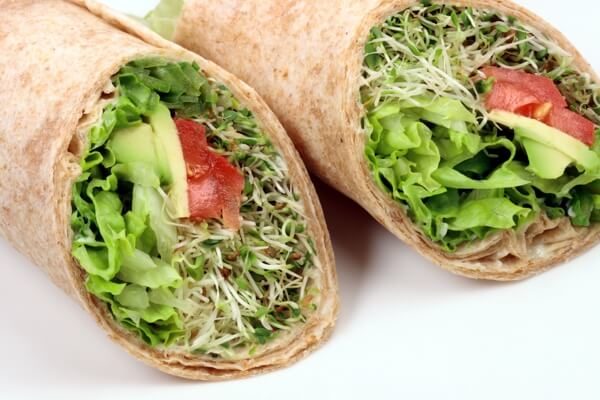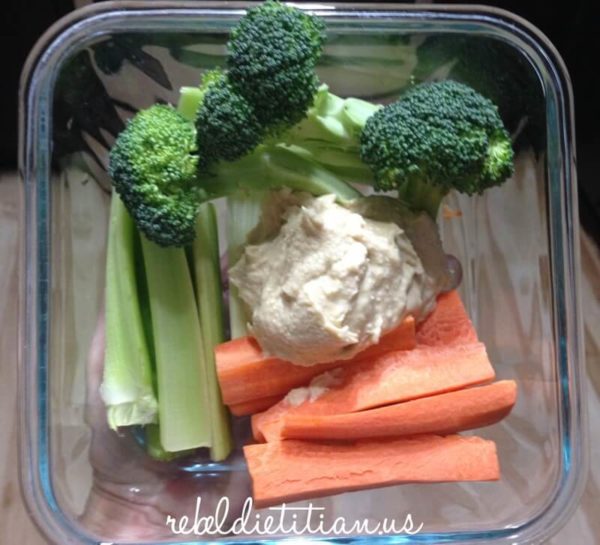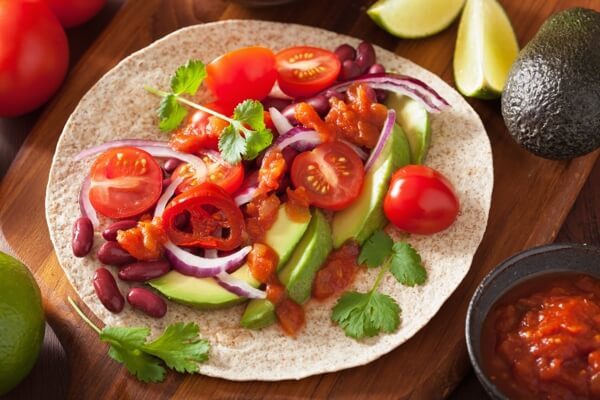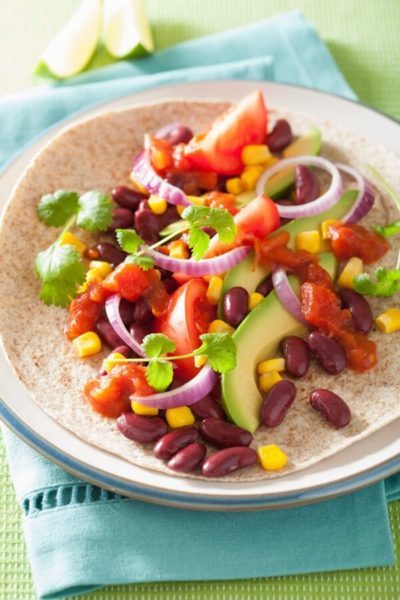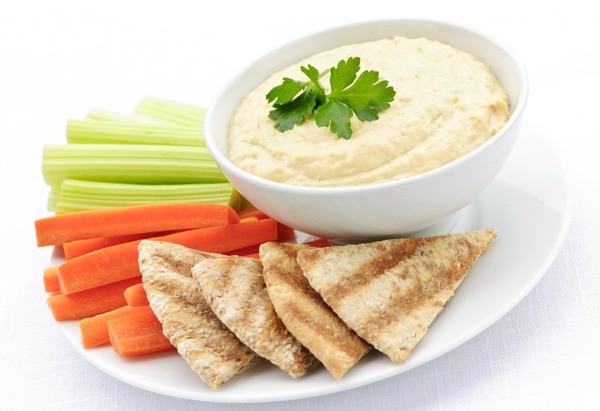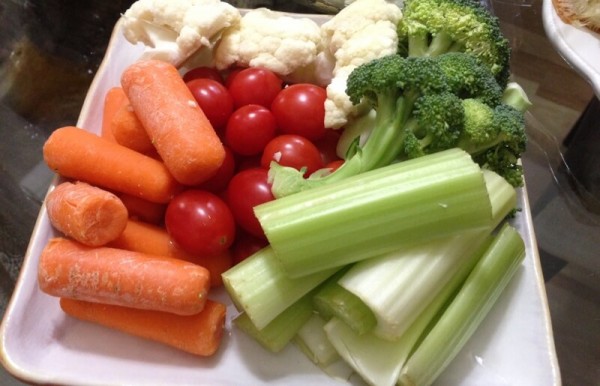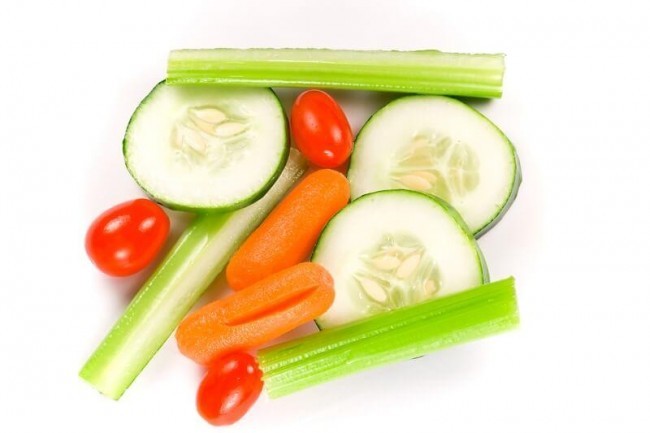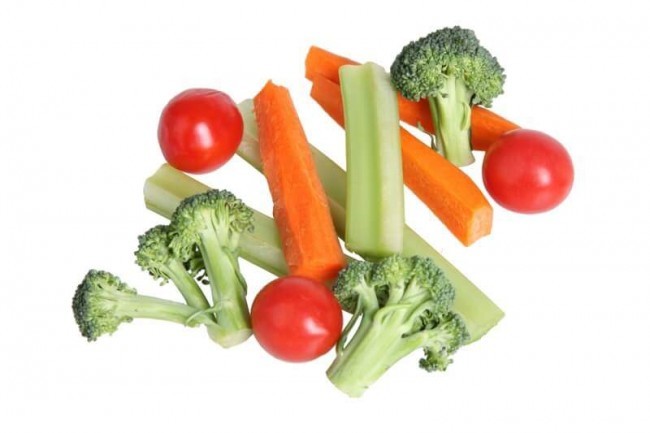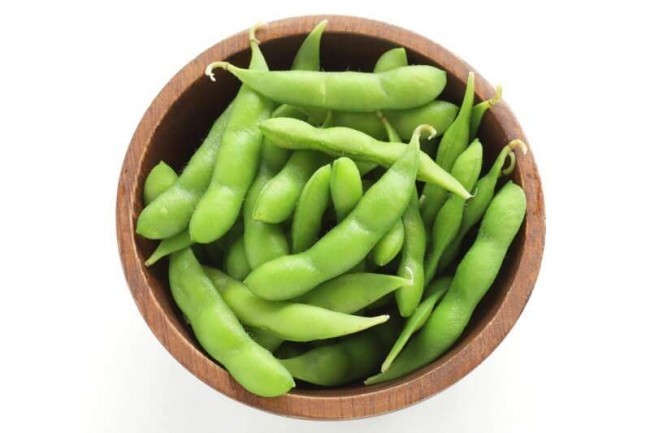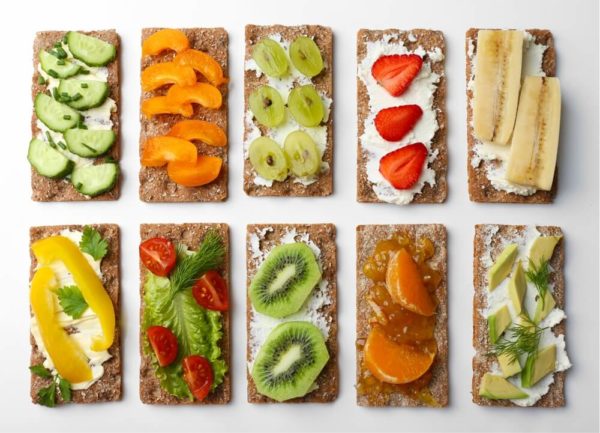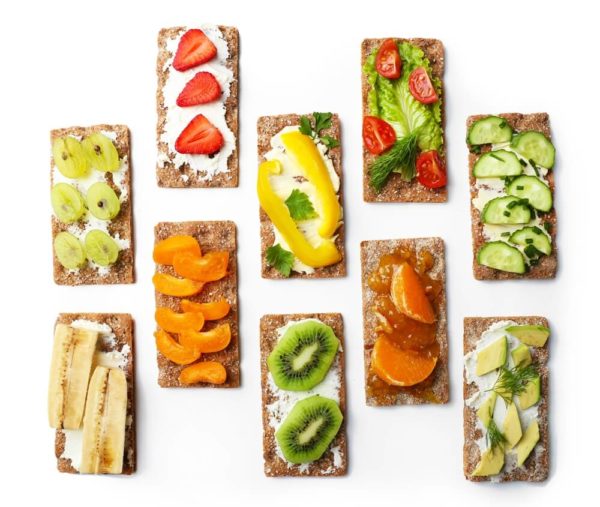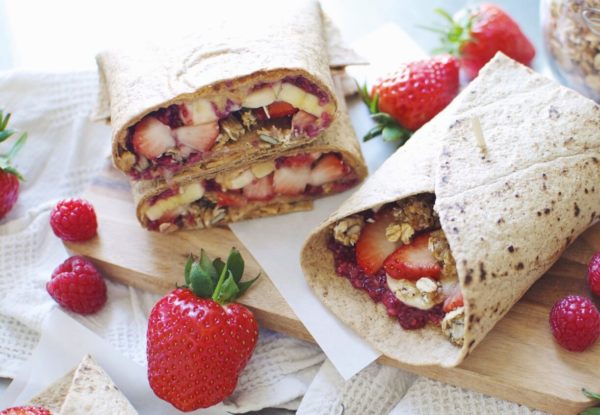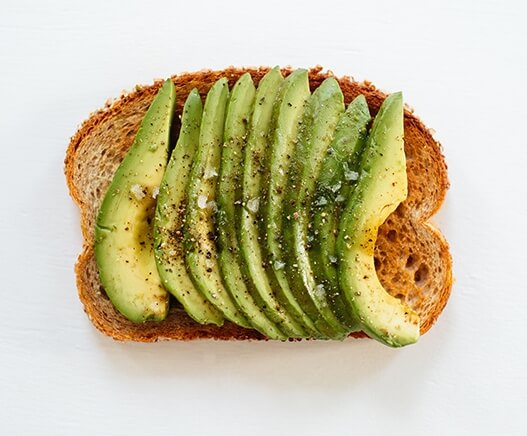Diets high in fresh fruits and vegetables are widely recommended for their health-promoting and disease prevention properties. Regular consumption of fresh fruits and vegetables is associated with a lower risk of developing a wide variety of diseases including obesity, type 2 diabetes, heart disease, and cancer. In fact, researchers believe some of these bioactive compounds may be just as effective – if not more effective – than prescription medications in disease prevention and treatment.
Eat the Rainbow
When it comes to eating more fruits and vegetables, it’s important to focus on eating a greater variety of different plants in order to optimize intake of micronutrients and bioactive compounds.
Red
Tomatoes, pink grapefruit and watermelon, which are rich in the carotenoid lycopene, a potent free-radical scavenger that likely protects against prostate cancer as well as heart and lung disease.
Red and Purple
Red and blue grapes, blueberries, strawberries, beets, eggplant, red cabbage, red peppers, plums and red apples are loaded with powerful antioxidants called anthocyanins believed to delay cellular aging and help the heart by blocking the formation of blood clots.
Orange
Carrots, mangoes, cantaloupe, winter squash and sweet potatoes are rich in the cancer-fighter alpha and beta-carotene; which, protect the skin against free-radical damage as well as promote the repair of damaged DNA.
Orange and Yellow
Oranges, peaches, papaya and nectarines are high in beta-cryptothanxin; which, supports intracellular communication and may help prevent heart disease.
Yellow and Green
Spinach, collards, corn, green peas, avocado and honeydew are sources of the carotenoids lutein and zeaxanthin. These antioxidants are associated with a reduced risk of cataracts and age-related macular degeneration; which, is the leading cause of preventable blindness in developed countries.
Green
Broccoli, brussels sprouts, cabbage, kale, and bok choy are rich sources of several anti-cancer compounds including sulforaphane, isocyanate, and indoles.
White and Green
Garlic, onions, leeks, celery, asparagus, pears and green grapes contain bioactive compounds including allicin, quercetin, and kaempferol.
20 Ways to Eat More Fruits and Vegetables
Fiber
Fiber is naturally found in plant-based foods (not animal products) and populations who consume diets high in fiber are at lower risk of developing obesity, type 2 diabetes, heart disease, and cancer.
When increasing fiber intake, consider increasing intake gradually (e.g., 5 – 10 grams per week) in order to reduce the side effects associated with rapid fiber intake. Symptoms frequently experienced by individuals who increase their fiber intake too rapidly include gas, abdominal bloating, feelings of fullness, nausea, and diarrhea; however, these side effects are temporary and decrease over time.
Eat Your Water
Increasing intake of fresh fruits and vegetables also contributes to improved hydration. Fresh fruits and vegetables are a natural source of water and electrolytes. As such, populations with high intakes of fresh fruits and vegetables often drink less free water. Why drink your water if you can eat it?!
Produce Storage and Handling
You can learn more about produce storage and handling by visiting the page titled Produce Storage and Handling.
FAQs
What about fresh smoothies?
Fresh fruit and vegetable smoothies are considered healthful when they are prepared without added sugar and fat. Whenever possible, include the peel and other edible parts of fruits and vegetables in your smoothies for added health benefits. With this being said, it is important to understand that food processing; which, includes mechanical blending, increases the energy available from food. In simple terms, this means the energy provided by an equivalent amount of whole fruits and vegetables when consumed either whole or as a smoothie is greater with the smoothie. My point is, consume fresh fruits and vegetables whole, with the peel, whenever possible for optimal health benefits (including weight management).
What about dried fruit?
Consumption of naturally dried fruit (without added sugar or oil) appears to be healthy. In a recent study, the glucose response after consuming 50 grams of carbohydrate from raisins resulted in a significantly different glucose and insulin response than an equal amount of carbohydrate in the form of white bread. If you are a fan of dried fruit, opt for naturally dehydrated products free of added sugar and oil, or simply dry your own.
Learn More
Rebel Lifestyle
To learn more about my lifestyle, visit the page titled Rebel Lifestyle.
Rebel Grub
To view photos of my grub, check out the page titled Rebel Grub.
Meal Planning
To view meal planning information, head over to the page Meal Planning.
Shopping Lists
To view shopping lists, visit the page titled Shopping Lists.
Posters and Charts
To view my posters and charts, hit up the page titled Posters.
Pinterest and Facebook
Posters and Charts
Except where otherwise noted, content on this site is licensed under a CC BY-NC-ND 4.0 license. This means you are free to use my work for personal use (e.g., save the file to your computer or share via social media) as long as you do not modify the image or use the image for commercial purposes ($).
References:
Conner TS, Brookie KL, Richardson AC, Polak MA. On carrots and curiosity: eating fruit and vegetables is associated with greater flourishing in daily life. Br J Health Psychol. 2015;20(2):413-27.
Block G, Patterson B, Subar A. Fruit, vegetables, and cancer prevention: a review of the epidemiological evidence. Nutr Cancer 1992;18:1-29.
Ness AR, Fowles JW. Fruit and vegetables and cardiovascular disease: a review. Int J Epidemiol 1997;26:1-13.
Serdula MK, Byers T, Mokdad AH, et al. The association between fruit and vegetable intake and chronic disease risk factors. Epidemiol 1996;7(2):161-5.
Estimation of cancer risks and benefits associated with a potential increased consumption of fruits and vegetables. Food and Chemical Toxicology. Volume 50, Issue 12, December 2012, Pages 4421–4427. DOI: doi:10.1016/j.fct.2012.08.055
Lanza E. Schatzkin A, Daston C, et al. Implementation of a 4-y, high-fiber, high-fruit-and-vegetable, low-fat dietary intervention: results of dietary changes in the Polyp Prevention Trial. Am J Clin Nutr 2001;74:387-401.
Gold, L. S. Misconceptions about the causes of cancer (2002). Vancouver, B.C.: Fraser Institute, Centre for Studies in Risk and Regulation. Retrieved from http://toxnet.nlm.nih.gov/cpdb/pdfs/Gold_Misconceptions.pdf
Pereira, M. A., Fulgoni, V. L. Consumption of 100% Fruit Juice and Risk of Obesity and Metabolic Syndrome: Findings from the National Health and Nutrition Examination Survey 1999–2004. Journal of the American College of Nutrition, 29(6), 625-629. doi:10.1080/07315724.2010.10719901
Nanney, M. S., Haire-Joshu, D., Hessler, K., Brownson, R. C. (2004). Rationale for a consistent “powerhouse” approach to vegetable and fruit messages. Journal of the American Dietetic Association, 104(3), 352-356. doi:10.1016/j.jada.2003.12.015
Rolls BJ, Ello-Martin JA, Tohill BC. What can intervention studies tell us about the relationship between fruit and vegetable consumption and weight management? Nutr Reviews 2004;62:1-17.
Darmon, N., Darmon, M., Maillot, M., Drewnowski, A. (2005). A Nutrient Density Standard for Vegetables and Fruits: Nutrients per Calorie and Nutrients per Unit Cost. Journal of the American Dietetic Association, 105(12), 1881-1887. doi:10.1016/j.jada.2005.09.005
Wang B, Liu K, Mi M, Wang J. Effect of Fruit Juice on Glucose Control and Insulin Sensitivity in Adults: A Meta-Analysis of 12 Randomized Controlled Trials. Manzoli L, ed. PLoS ONE 2014;9(4):e95323. doi:10.1371/journal.pone.0095323.
Bazzano, L. A., Li, T. Y., Joshipura, K. J., Hu, F. B. (2008). Intake of Fruit, Vegetables, and Fruit Juices and Risk of Diabetes in Women. Diabetes Care, 31(7), 1311-1317. doi:10.2337/dc08-0080.
Drewnowski A. Concept of a nutritious food: toward a nutrient density score. Am J Clin Nutr 2005; 82(4):721–32.
Higdon JV, Delage B, Williams DE, Dashwood RH. Cruciferous vegetables and human cancer risk: epidemiologic evidence and mechanistic basis. Pharmacol Res 2007; 55(3):224–36
Seeram NP. Recent trends and advances in berry health benefits research. J Agric Food Chem 2010;58(7):3869–70.
Darmon N, Darmon M, Maillot M, Drewnowski A. A nutrient density standard for vegetables and fruits: nutrients per calorie and nutrients per unit cost. J Am Diet Assoc 2005;105(12):1881–7.
Li S, Miao S, Huang Y, Liu Z, Tian H, Yin X, Tang W, Steffen LM, Xi B. Fruit intake decreases risk of incident type 2 diabetes: an updated meta-analysis. Endocrine. 2014 Jul 30. doi: 10.1007/s12020-014-0351-6
Büchner FL, et al. Fruits and vegetables consumption and the risk of histological subtypes of lung cancer in the European Prospective Investigation into Cancer and Nutrition (EPIC). Cancer Causes Control. 2010 Mar; 21(3):357-71. doi: 10.1007/s10552-009-9468-y.
Compared with the intake of commercial vegetable juice, the intake of fresh fruit and komatsuna (Brassica rapa L. var. perviridis) juice mixture reduces serum cholesterol in middle-aged men: a randomized controlled pilot study.
Role of Bioactive Food Components in Diabetes Prevention: Effects on Beta-Cell Function and Preservation. Nutr Metab Insights; 2014; 7: 51–59. doi: 10.4137/NMI.S13589
Zachary T. Bloomgarden, MD. Nonnutritive Sweeteners, Fructose, and Other Aspects of Diet. Diabetes Care. 2011 May; 34(5): e46–e51. doi: 10.2337/dc11-0448
Bazzano LA, Li TY, Joshipura KJ, Hu FB. Intake of Fruit, Vegetables, and Fruit Juices and Risk of Diabetes in Women. Diabetes Care. 2008 Jul; 31(7):1311-7. doi: 10.2337/dc08-0080.
Fruit and vegetable intake and mortality from ischaemic heart disease: results from the European Prospective Investigation into Cancer and Nutrition (EPIC)-Heart study. Eur Heart J 32(10):1235–1243.
Mink PJ, Scrafford CG, Barraj LM, Harnack L, Hong CP, Nettleton JA, Jacobs DR Jr (2007) Flavonoid intake and cardiovascular disease mortality: a prospective study in postmenopausal women. Am J Clin Nutr 85(3):895–909
Boeing H, et al. Critical review: vegetables and fruit in the prevention of chronic diseases. Eur J Nutr 51(6):637–663.(2012)
Norat T, Aune D, Chan D, Romaguera D (2014) Fruits and vegetables: updating the epidemiologic evidence for the WCRF/AICR lifestyle recommendations for cancer prevention. Cancer Treat Res 159:35–50. doi:10.1007/978-3-642-38007-5_3
He FJ, Nowson CA, MacGregor GA (2006) Fruit and vegetable consumption and stroke: meta-analysis of cohort studies. Lancet 367(9507):320–326.
Oliver T Mytton, Kelechi Nnoaham, Helen Eyles, Peter Scarborough, Cliona Ni Mhurchu. Fruit consumption and risk of type 2 diabetes – results from three prospective longitudinal cohort studies. BMC Public Health. 2014; 14(1): 886. doi: 10.1186/1471-2458-14-886
Christensen, A. S., Viggers, L., Hasselström, K., Gregersen, S. (2013, March 5). Effect of fruit restriction on glycemic control in patients with type 2 diabetes – a randomized trial. 2013 Mar 5. doi: 10.1186/1475-2891-12-29
John S. White. Challenging the Fructose Hypothesis: New Perspectives on Fructose Consumption and Metabolism. Adv Nutr. 2013 Mar; 4(2): 246–256. doi: 10.3945/an.112.003137
Ludwig DS. Examining the Health Effects of Fructose. JAMA. 2013;310(1):33-34. doi:10.1001/jama.2013.6562.
Meyer BJ, de Bruin EJ, Du Plessis DG, van der Merwe M, Meyer AC. Some biochemical effects of a mainly fruit diet in man. S Afr Med J. 1971;45(10): 253-261.
Tohill, Beth Carlton. Dietary Intake of Fruit and Vegetables and Management of Body Weight. World Health Organization (WHO), 2005.
Kuntz S, Kunz C, Herrmann J, Borsch CH, Abel G, Fröhling B, Dietrich H, Rudloff S. Anthocyanins from fruit juices improve the antioxidant status of healthy young female volunteers without affecting anti-inflammatory parameters: results from the randomised, double-blind, placebo-controlled, cross-over ANTHOcyanins in Nutrition Investigation Alliance Study. Br J Nutr. 2014 Sep 28; 112(6): 925-36. doi: 10.1017/S0007114514001482.
Maren R. Laughlin. Normal Roles for Dietary Fructose in Carbohydrate Metabolism. Nutrients. 2014 Aug; 6(8): 3117–3129. doi: 10.3390/nu6083117
He FJ, Nowson CA, Lucas M, MacGregor GA. Increased consumption of fruit and vegetables is related to a reduced risk of coronary heart disease: meta-analysis of cohort studies. J Hum Hypertens. 2007; 21(9):717-728
Petta S, Marchesini G, Caracausi L, Macaluso FS, Cammà C, Ciminnisi S, Cabibi D, Porcasi R, Craxì A, Di Marco V. Industrial, not fruit fructose intake is associated with the severity of liver fibrosis in genotype 1 chronic hepatitis C patients. J Hepatol. 2013 Dec;59(6):1169-76. doi: 10.1016/j.jhep.2013.07.037.
Jaacks LM, Ma Y, Davis N, Delahanty LM, Mayer-Davis EJ, Franks PW, Brown-Friday J, Isonaga M, Kriska AM, Venditti EM, Wylie-Rosett J. Long-term changes in dietary and food intake behaviour in the Diabetes Prevention Program Outcomes Study. Diabet Med. 2014 Dec;31(12):1631-42. doi: 10.1111/dme.12500.
Ahmadi-Abhari S, Luben RN, Powell N, Bhaniani A, Chowdhury R, Wareham NJ, Forouhi NG, Khaw KT. Dietary intake of carbohydrates and risk of type 2 diabetes: the European Prospective Investigation into Cancer-Norfolk study. Br J Nutr. 2014 Jan 28; 111(2): 342-52. doi: 10.1017/S0007114513002298.
Baoru Yang , Maaria Kortesniemi. Clinical evidence on potential health benefits of berries. Current Opinion in Food Science (2015). Volume 2, Pages 36–42. doi: 10.1016/j.cofs.2015.01.002
Mukherjee AK, Basu S, Sarkar N, Ghosh AC. Advances in cancer therapy with plant based natural products. Curr Med Chem. 2001 Oct;8(12):1467-86. [Abstract]
Kurowska EM1, Manthey JA. Hypolipidemic effects and absorption of citrus polymethoxylated flavones in hamsters with diet-induced hypercholesterolemia. J Agric Food Chem. 2004 May 19;52(10):2879-86. DOI: 10.1021/jf035354z
 Rebel Dietitian Dana McDonald, RD
Rebel Dietitian Dana McDonald, RD 
